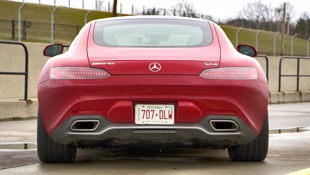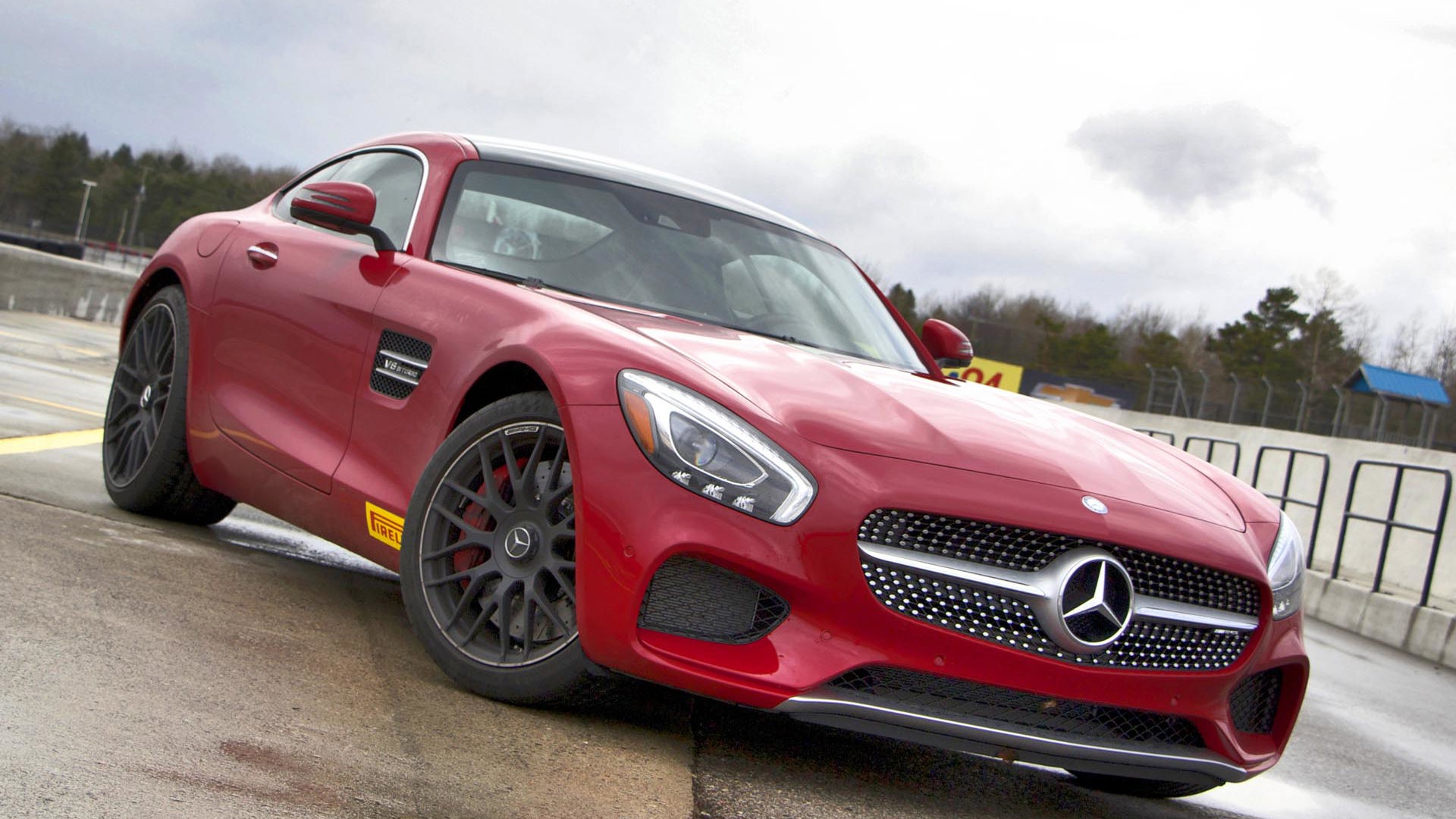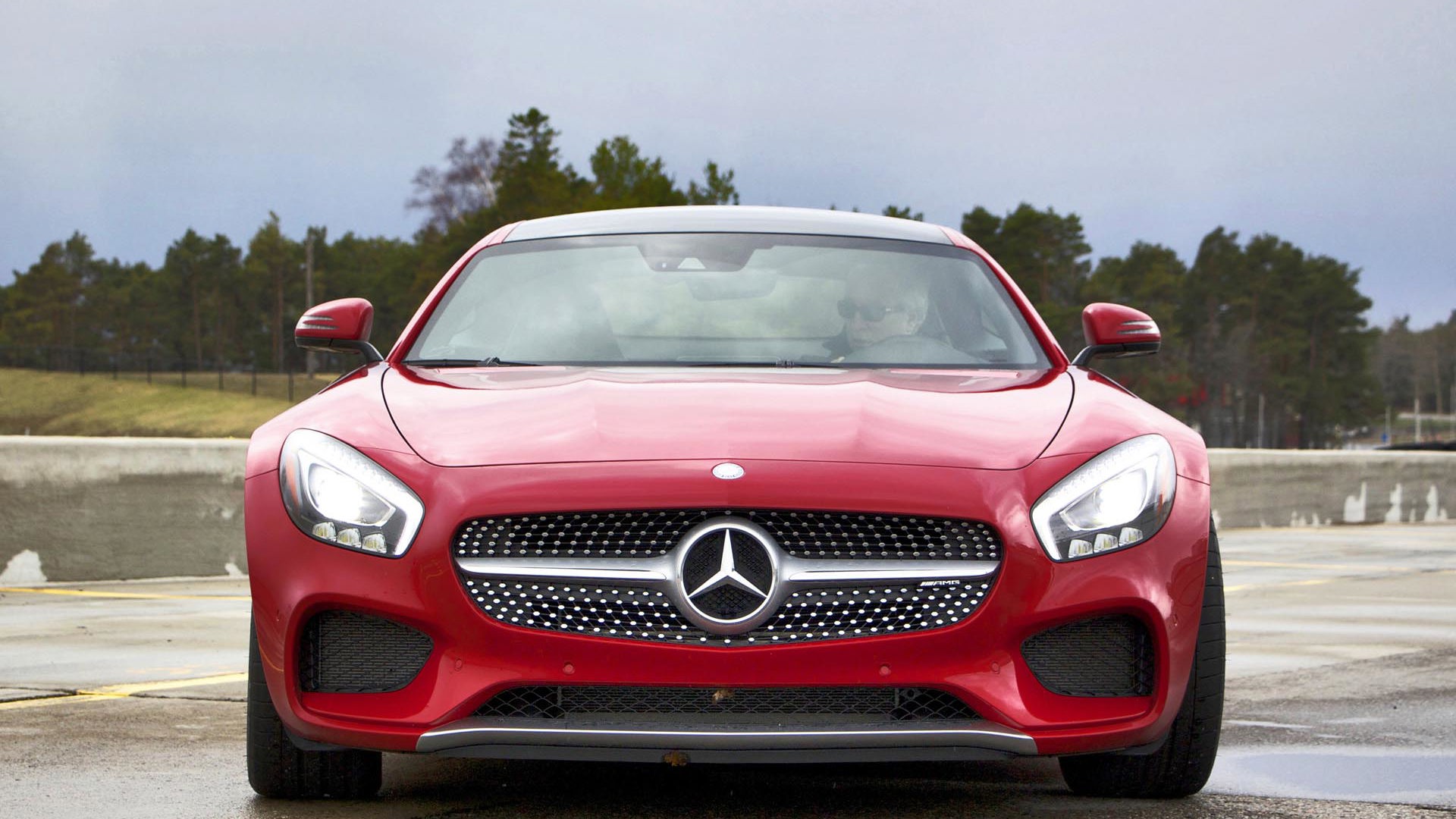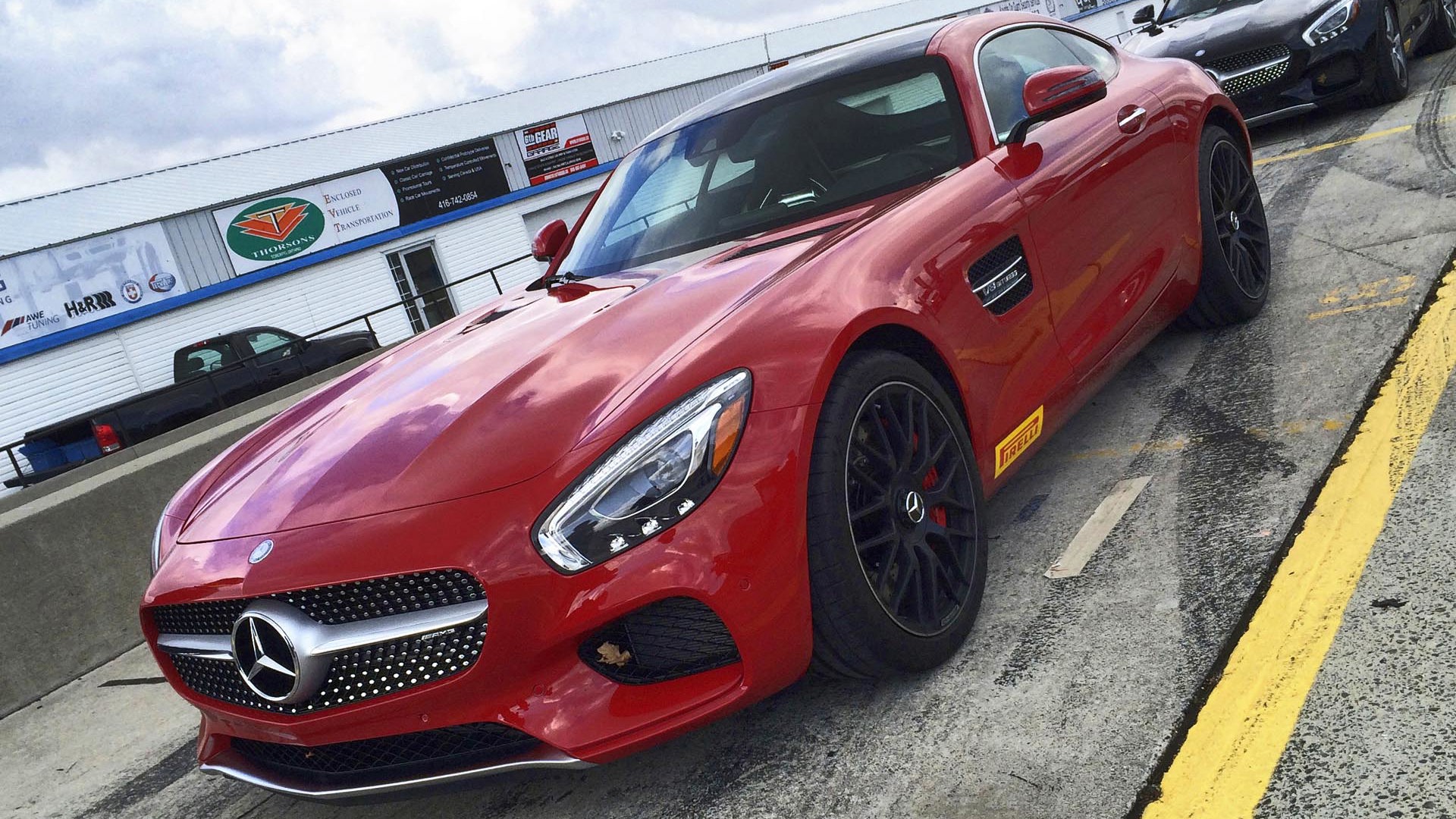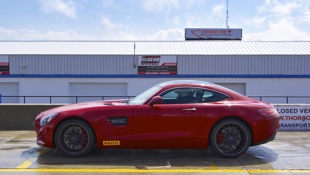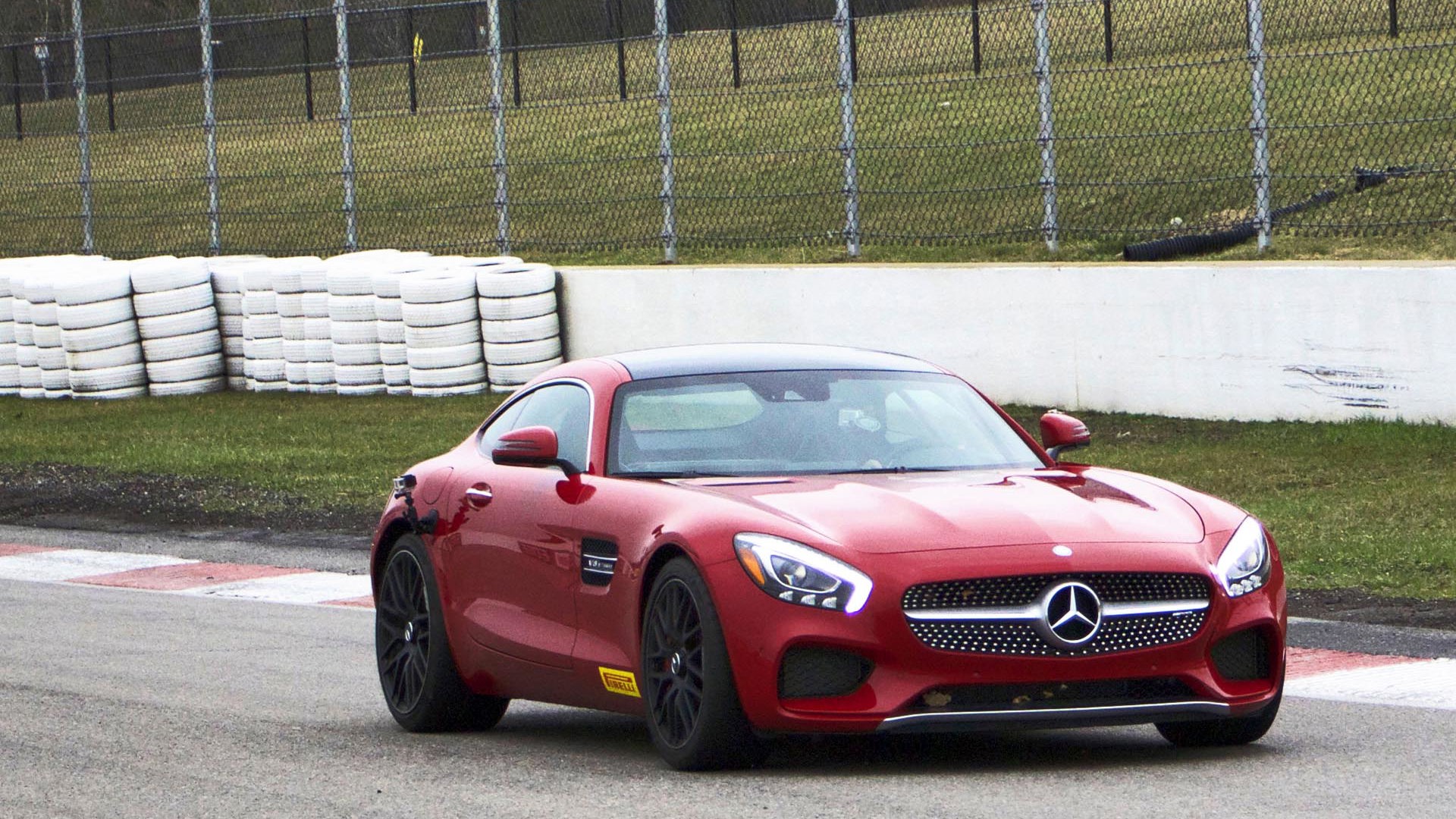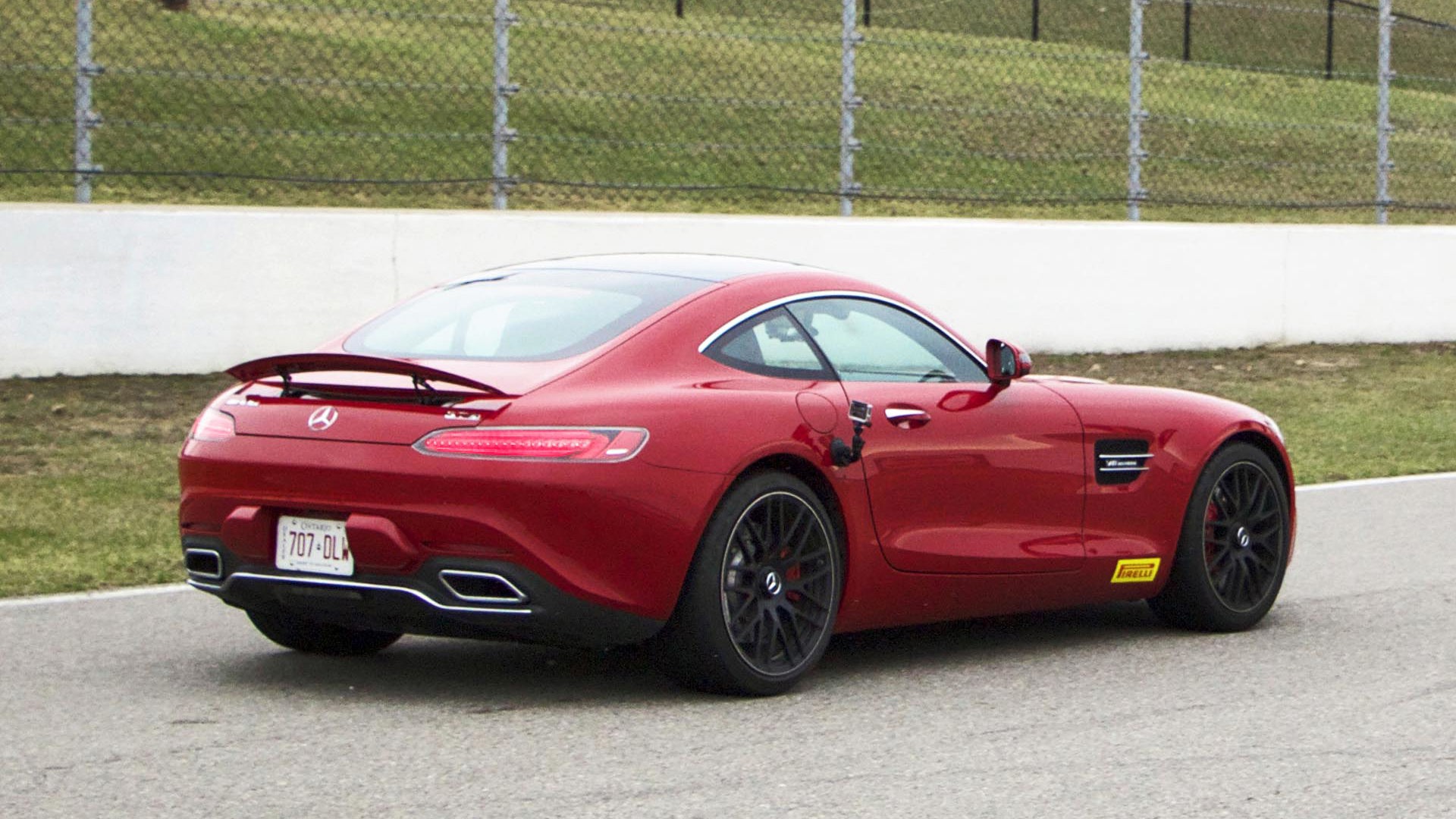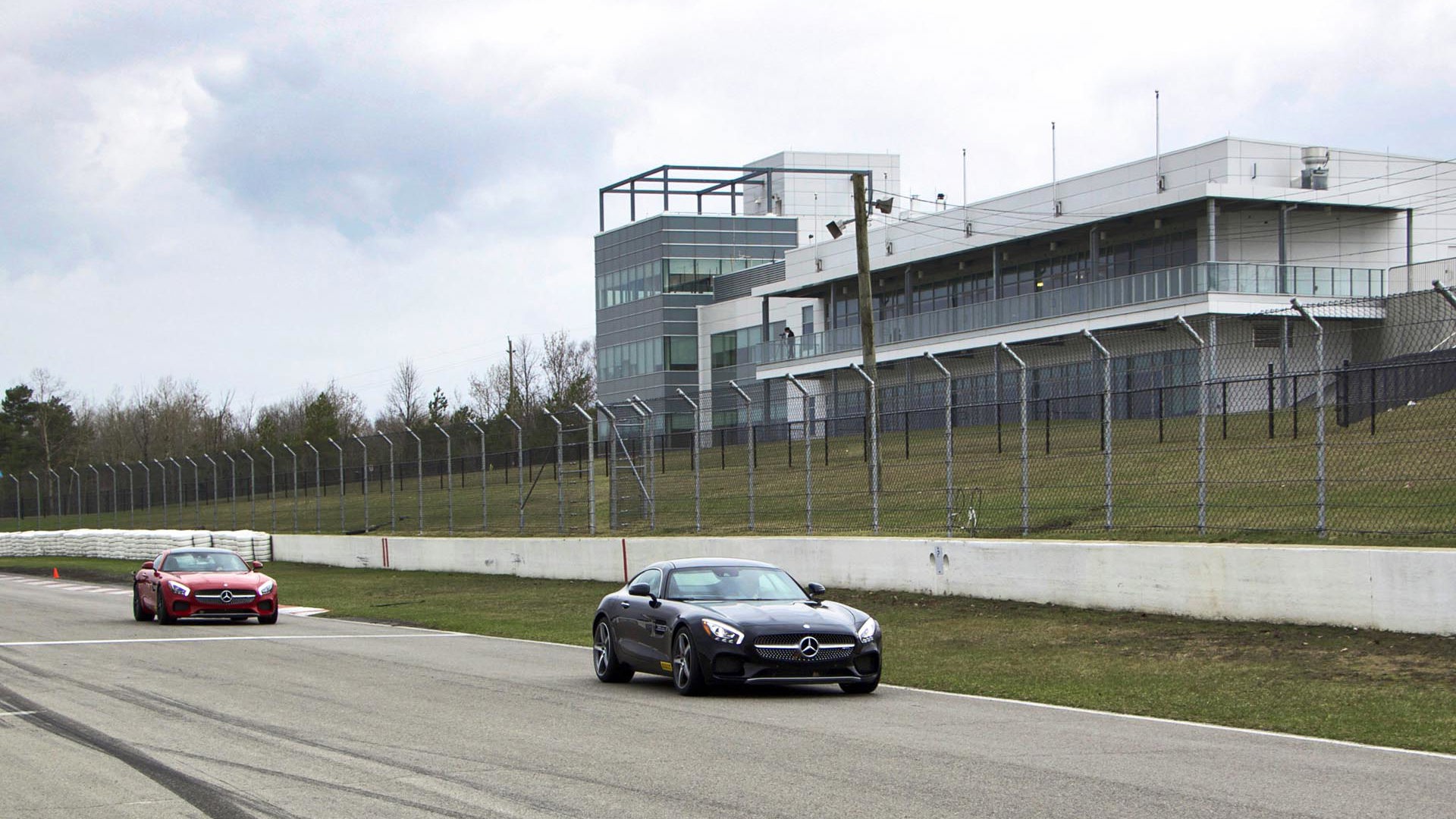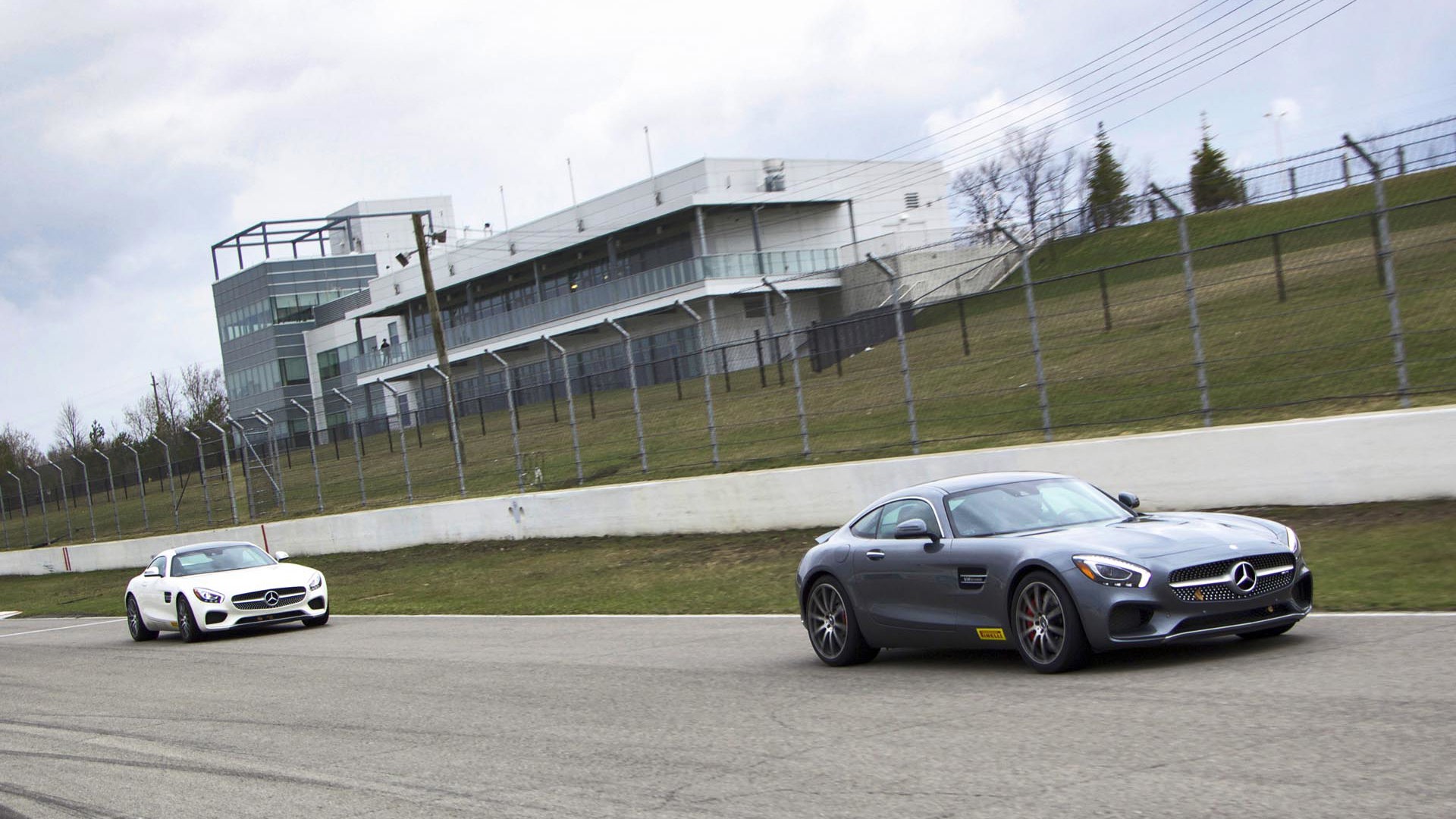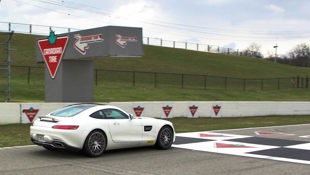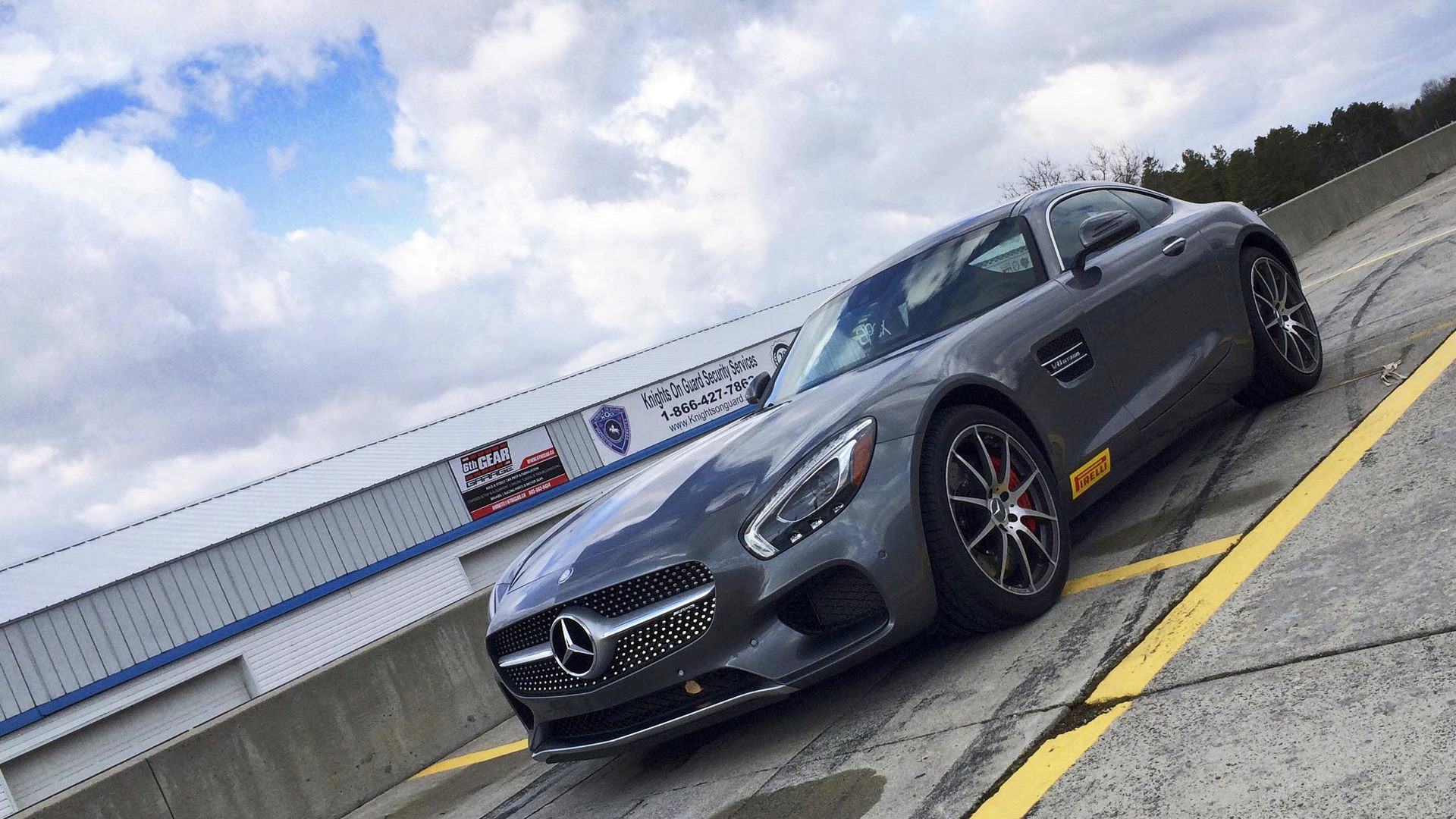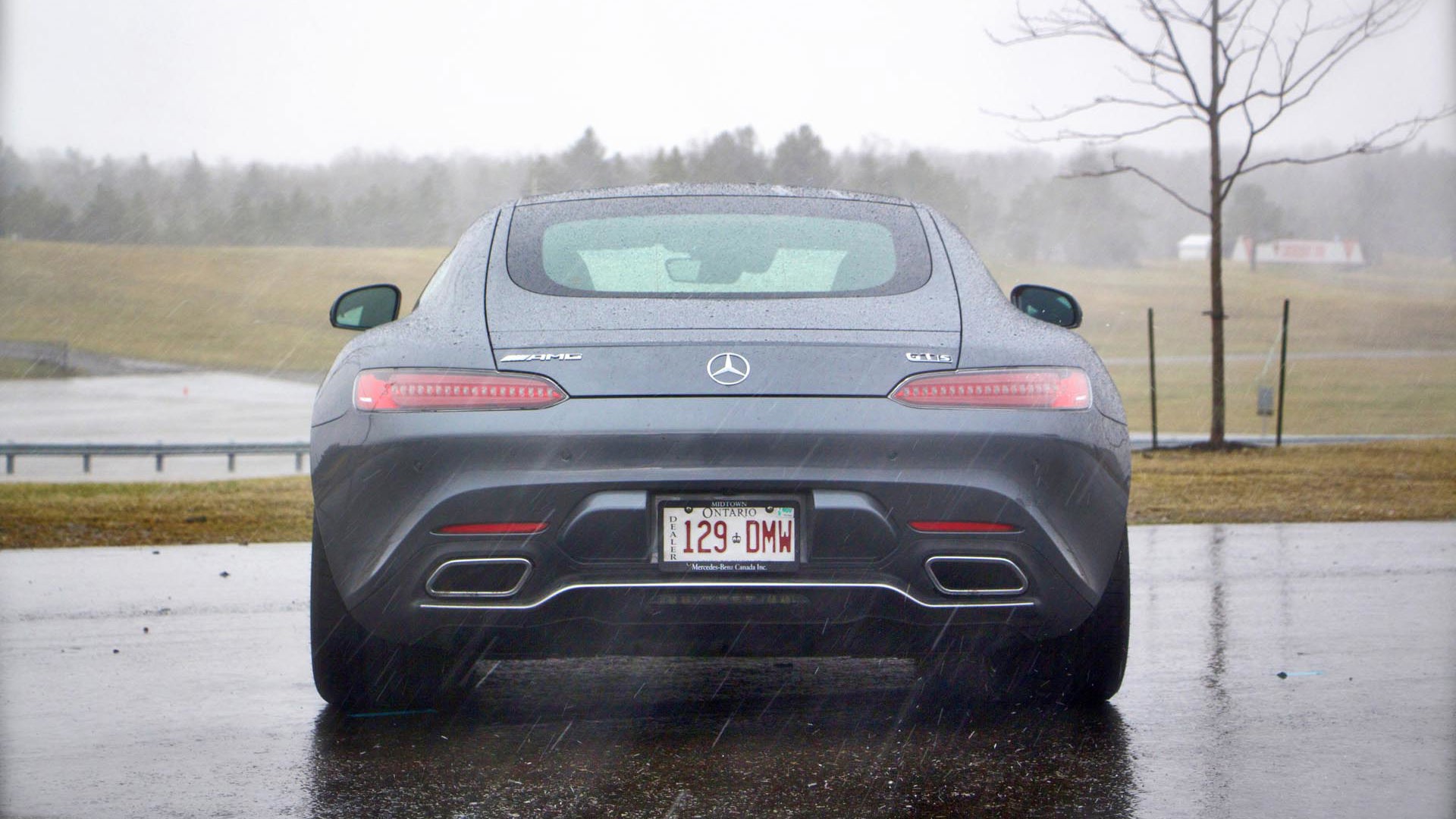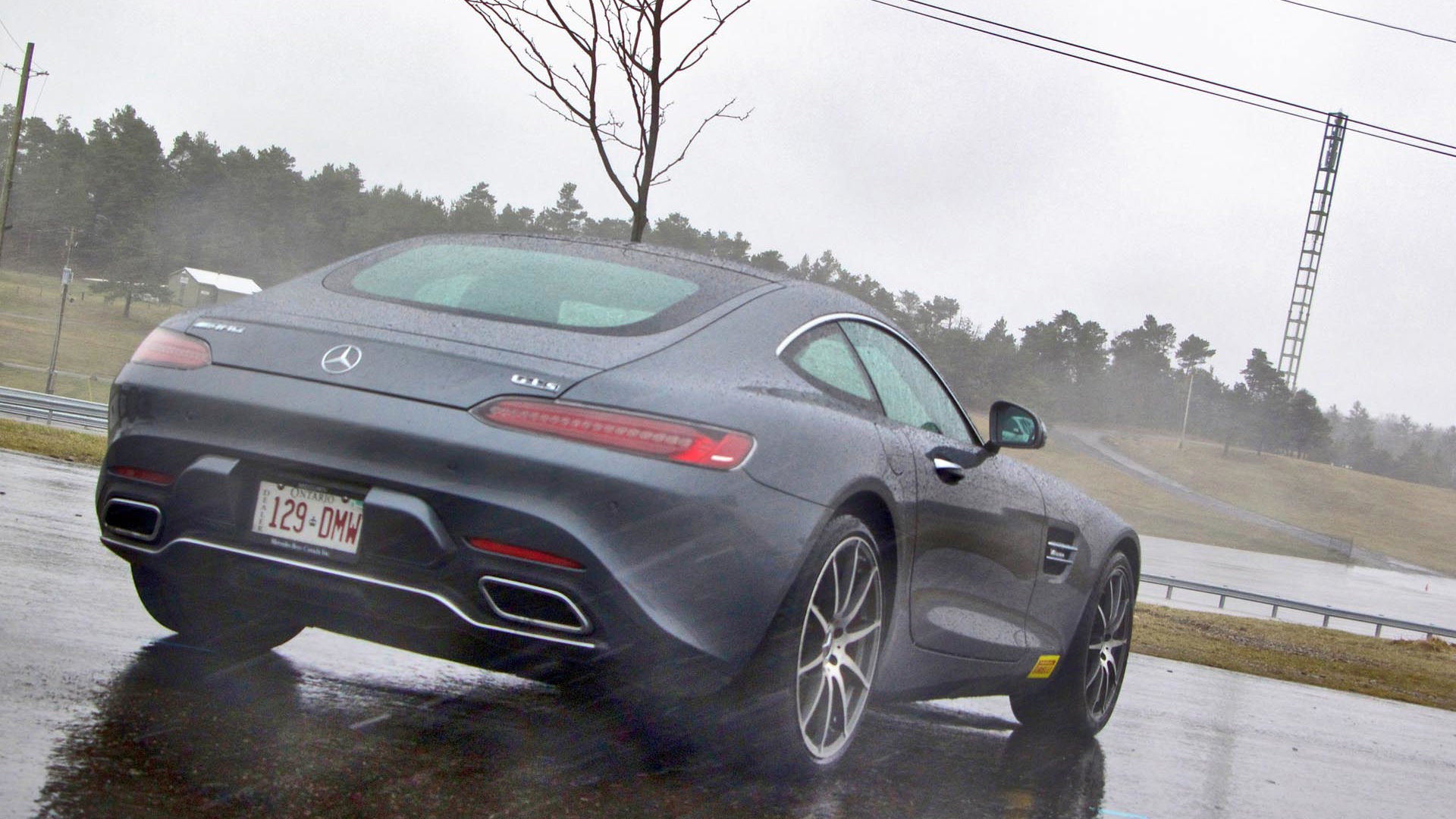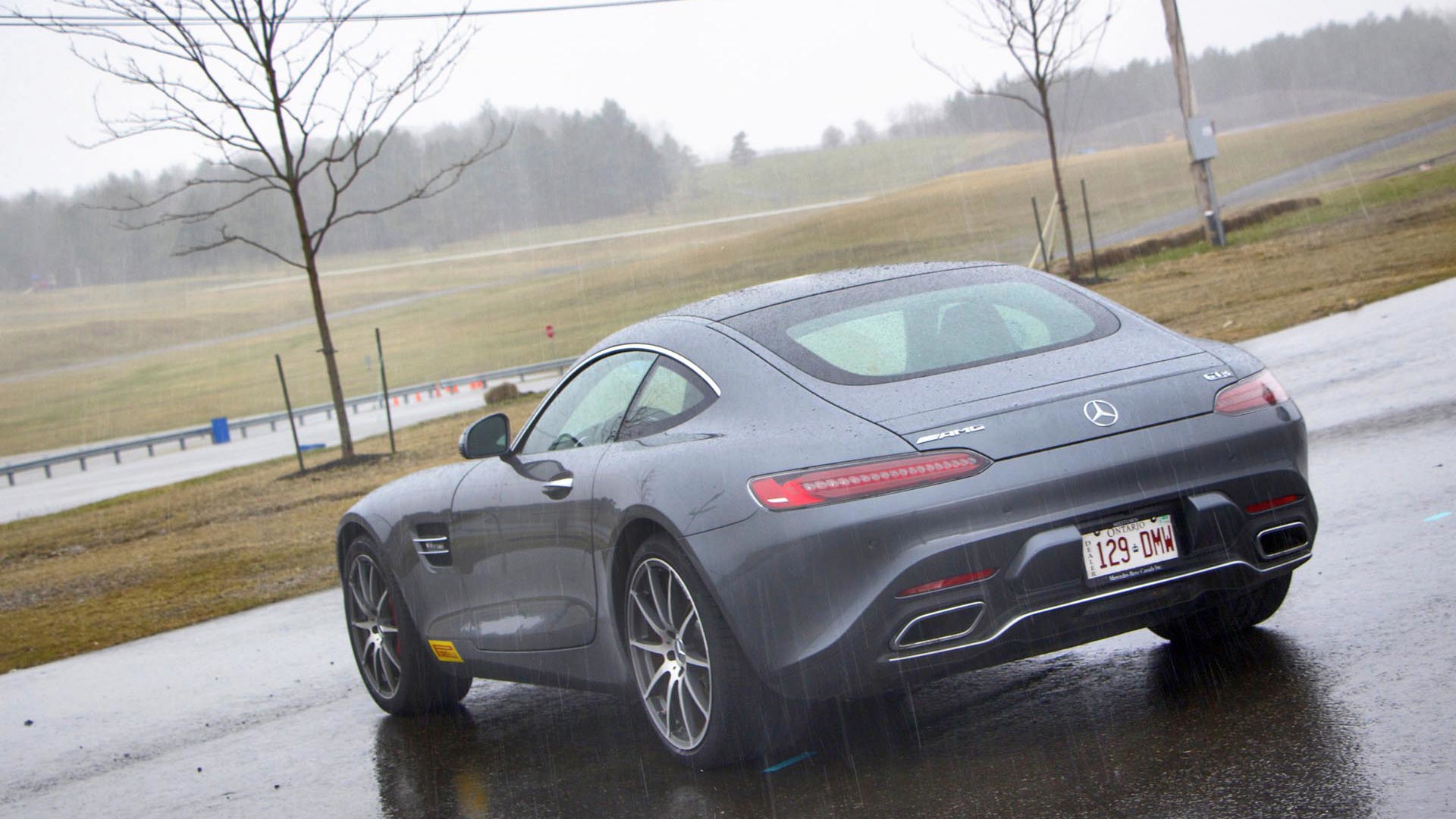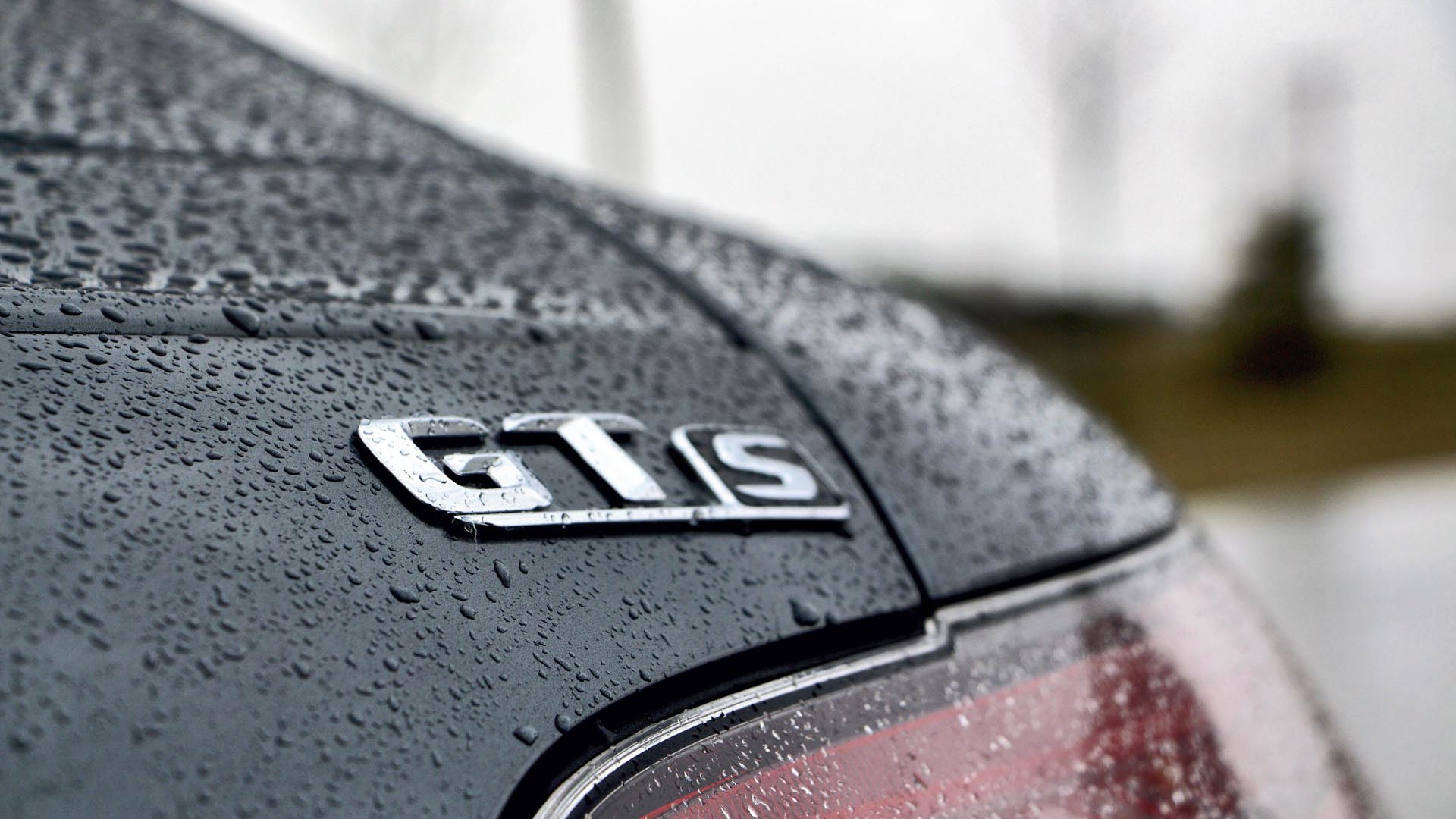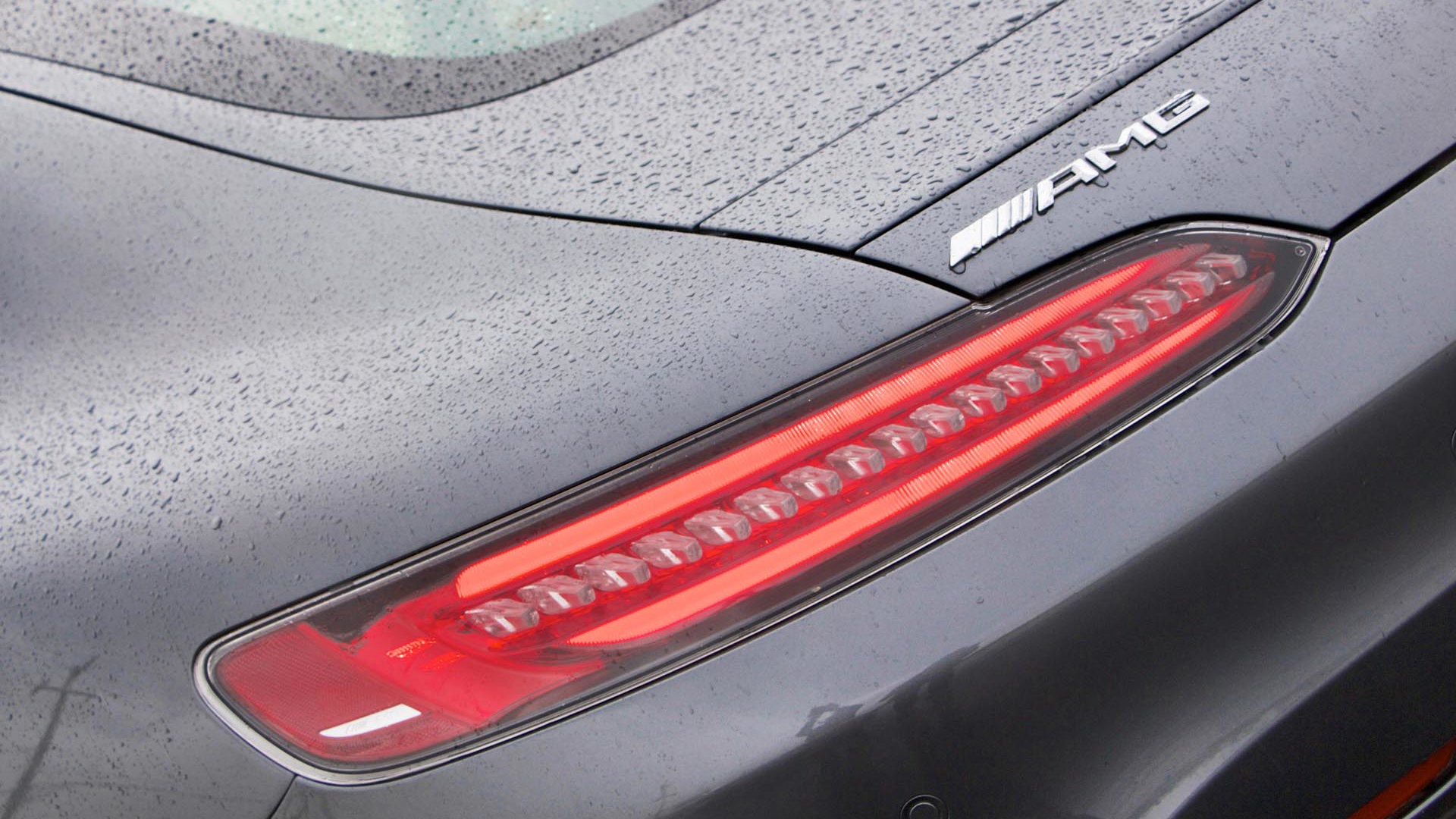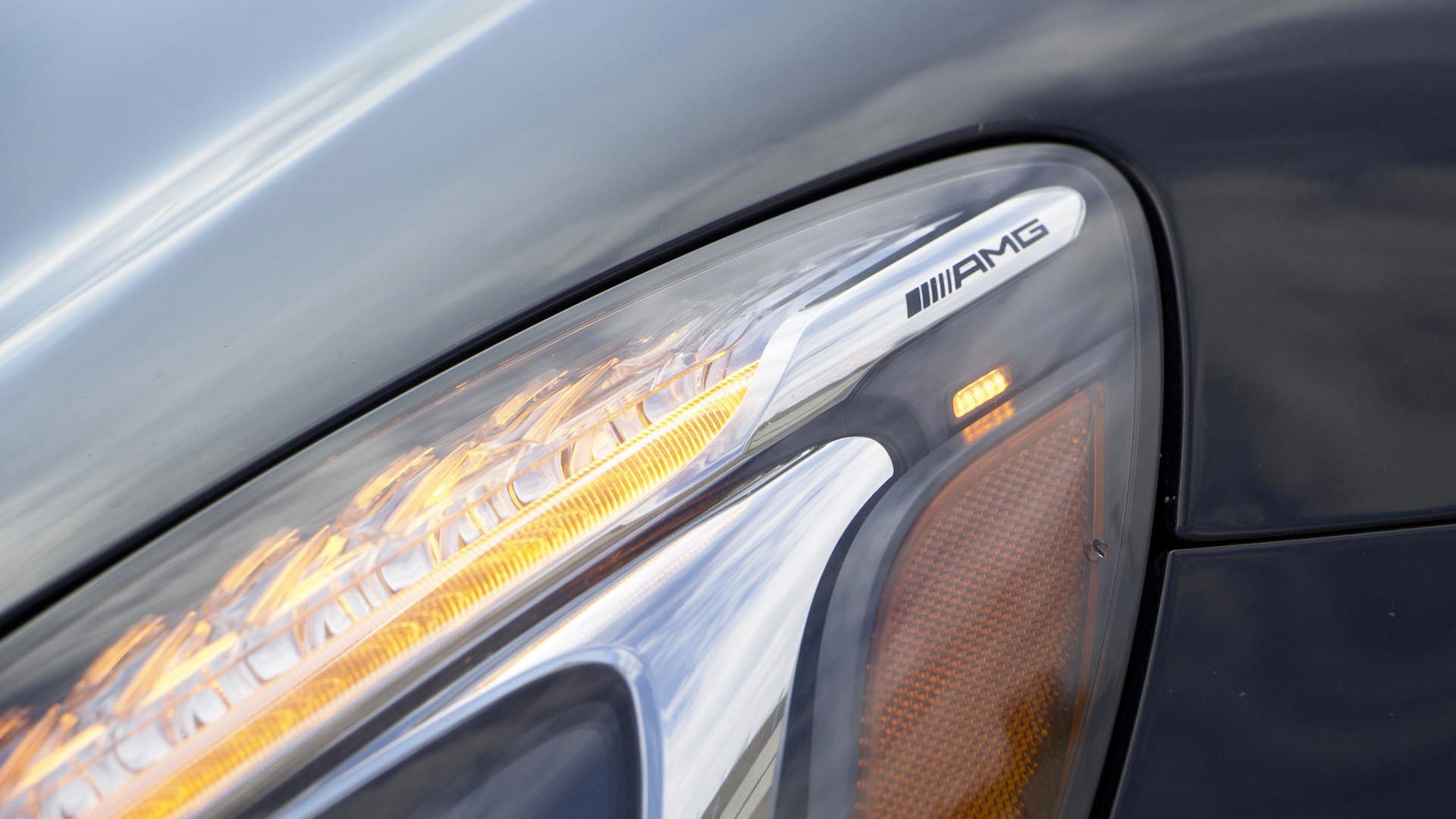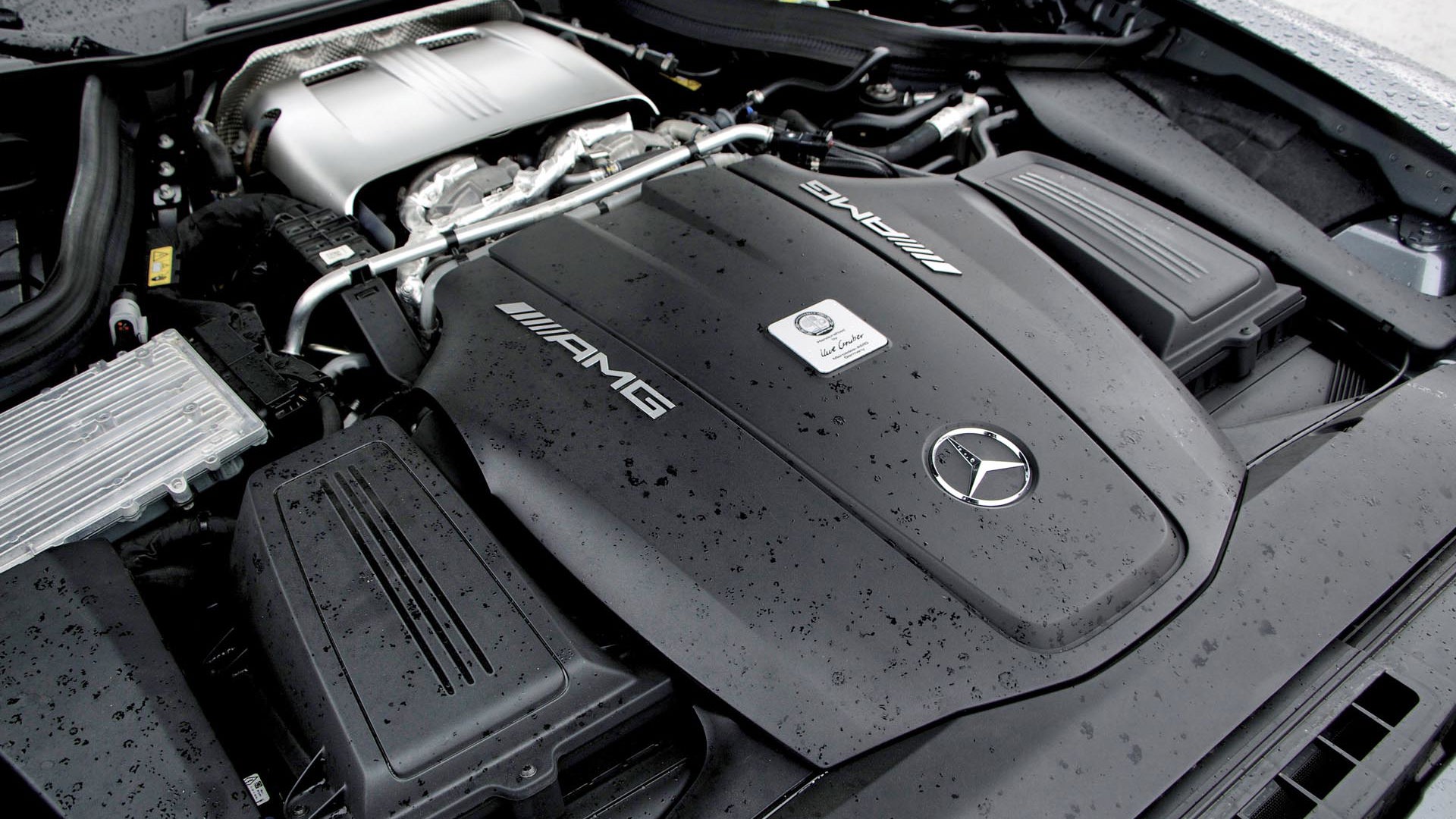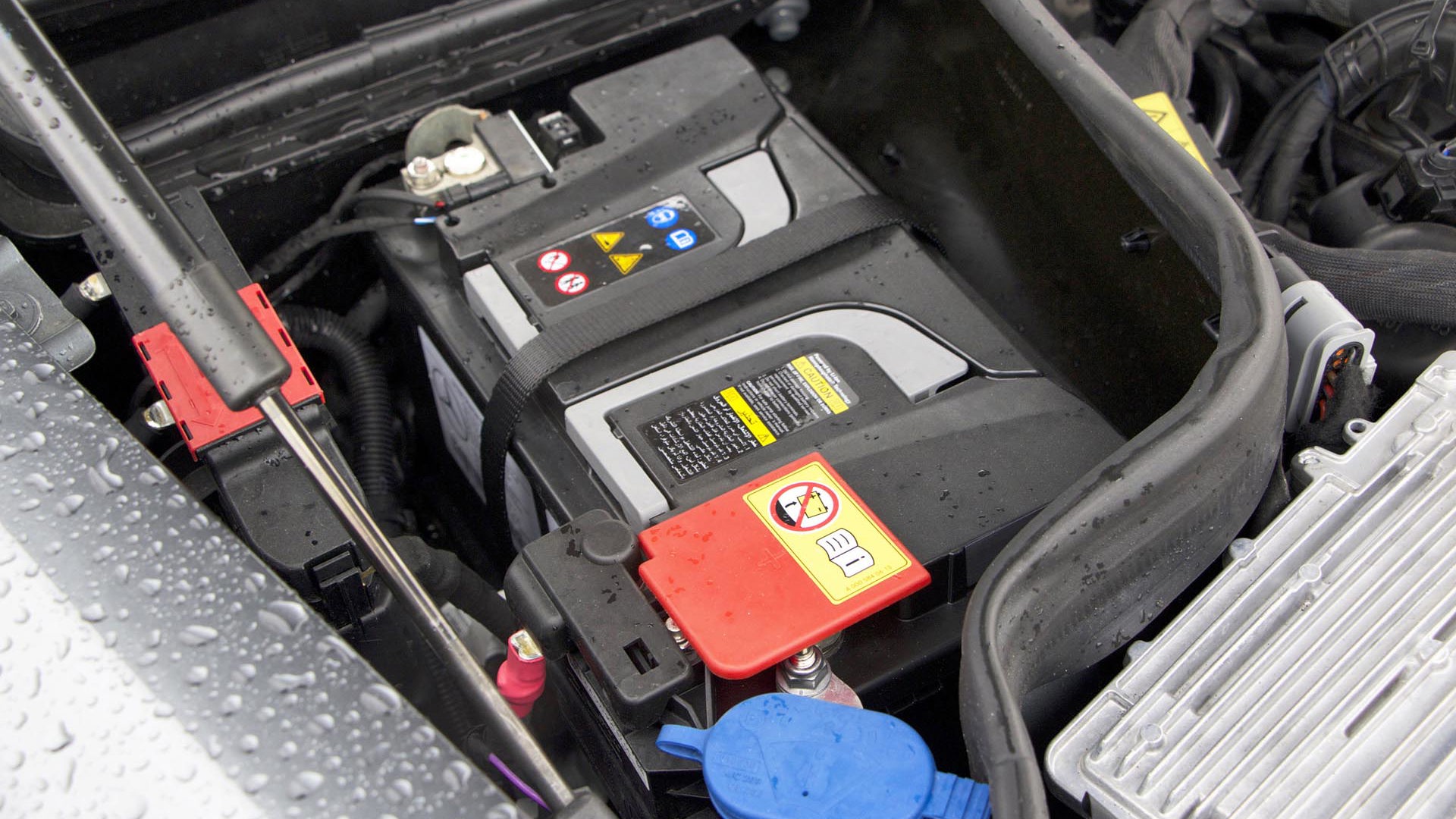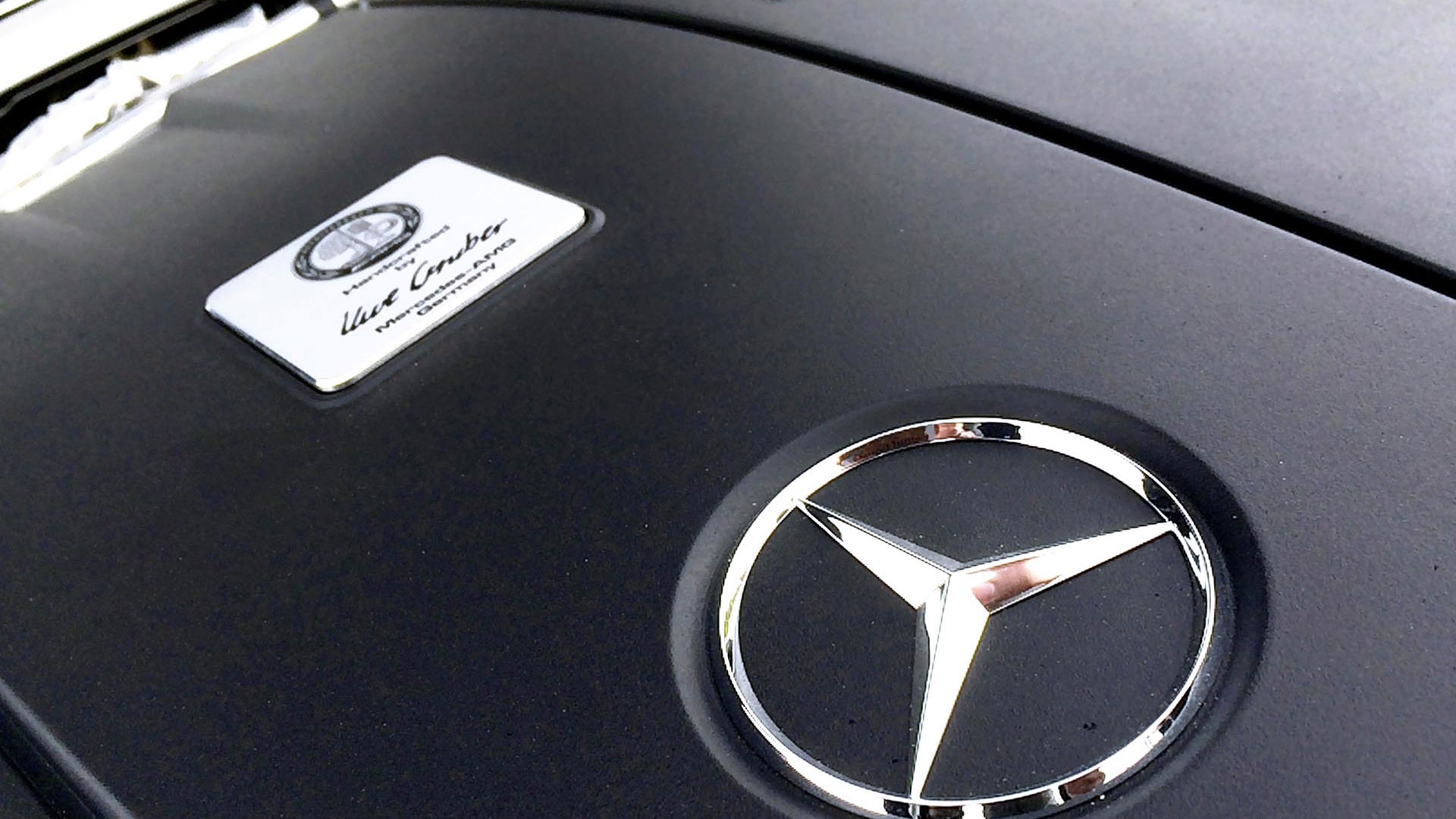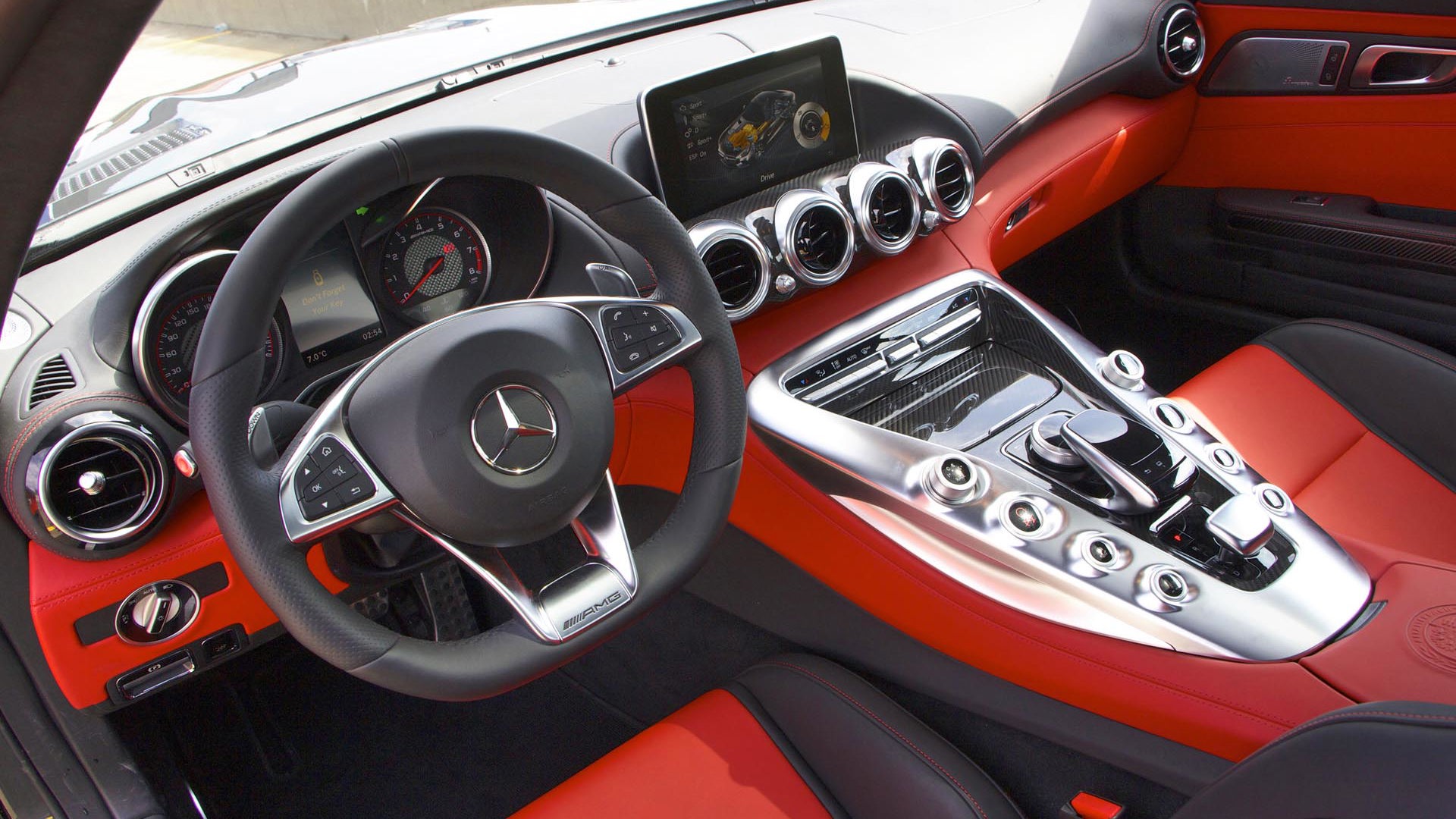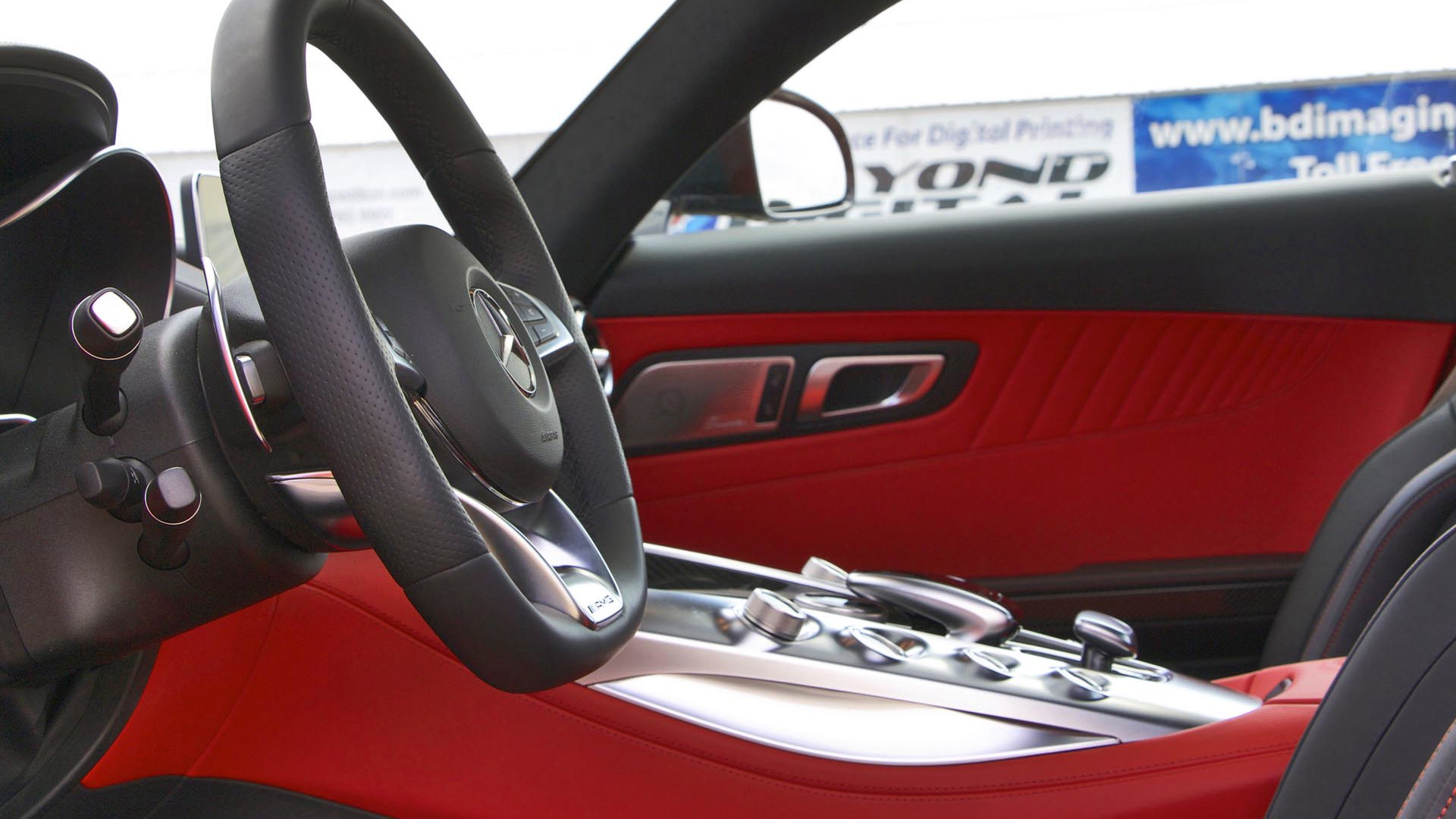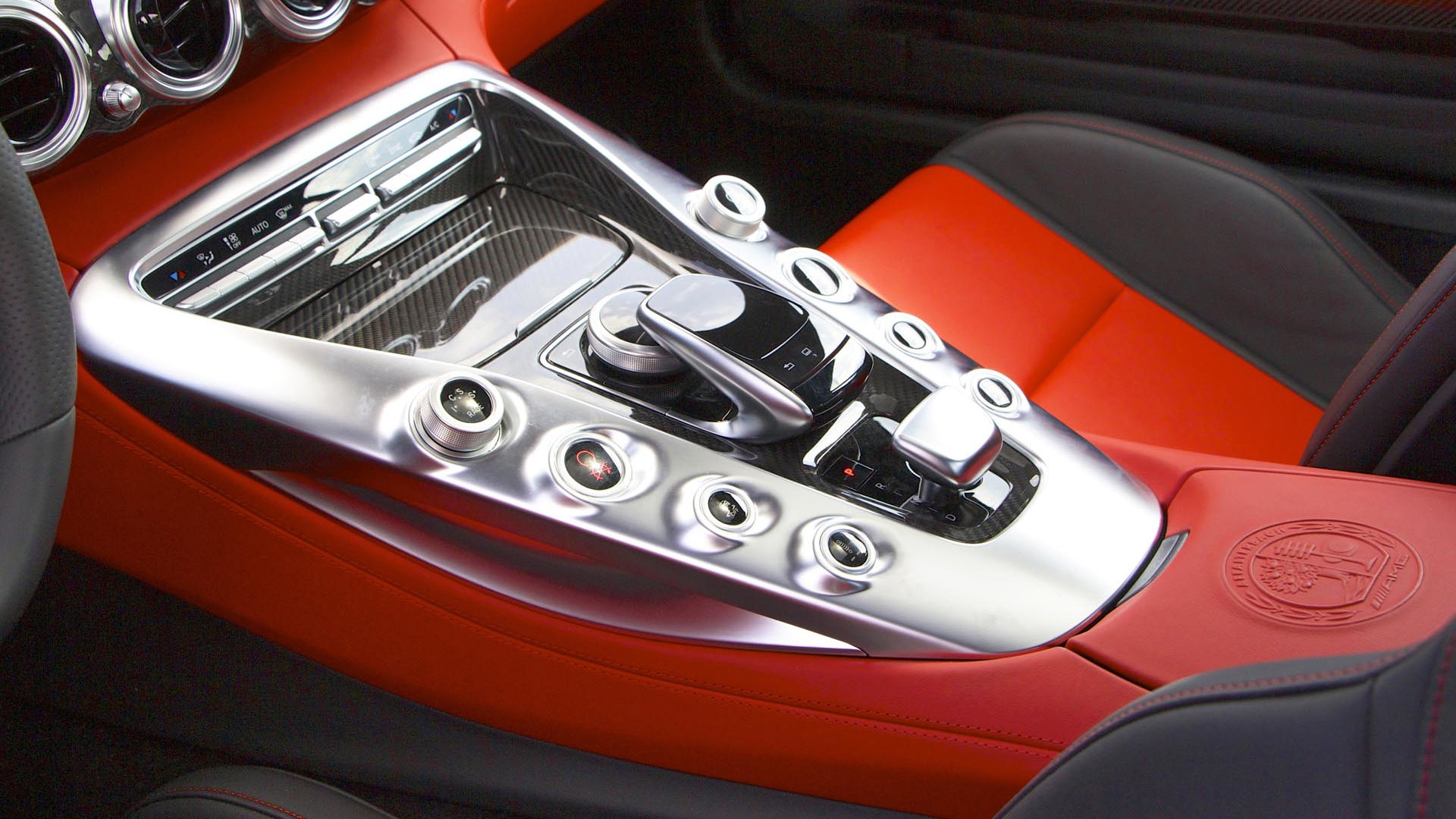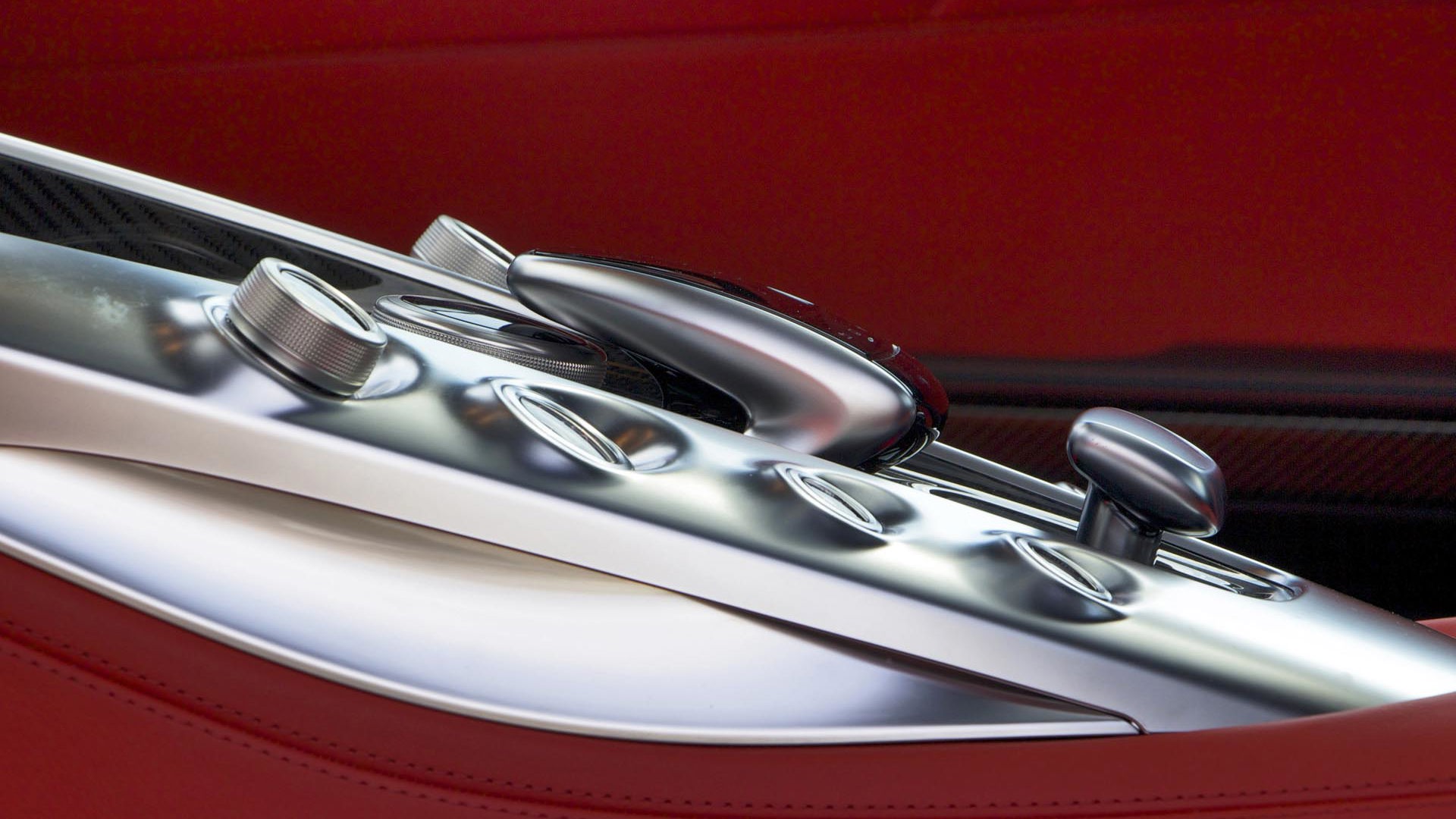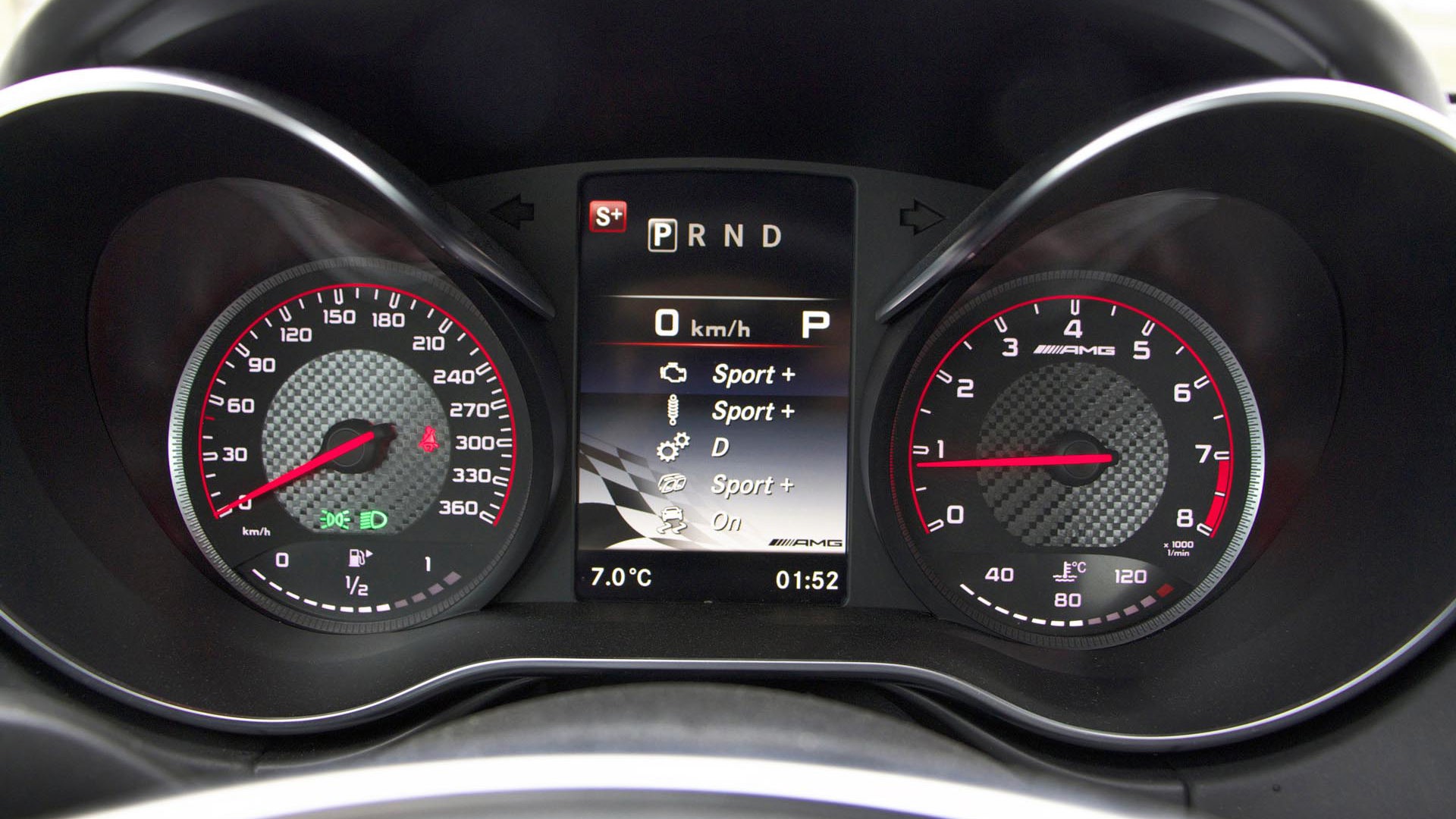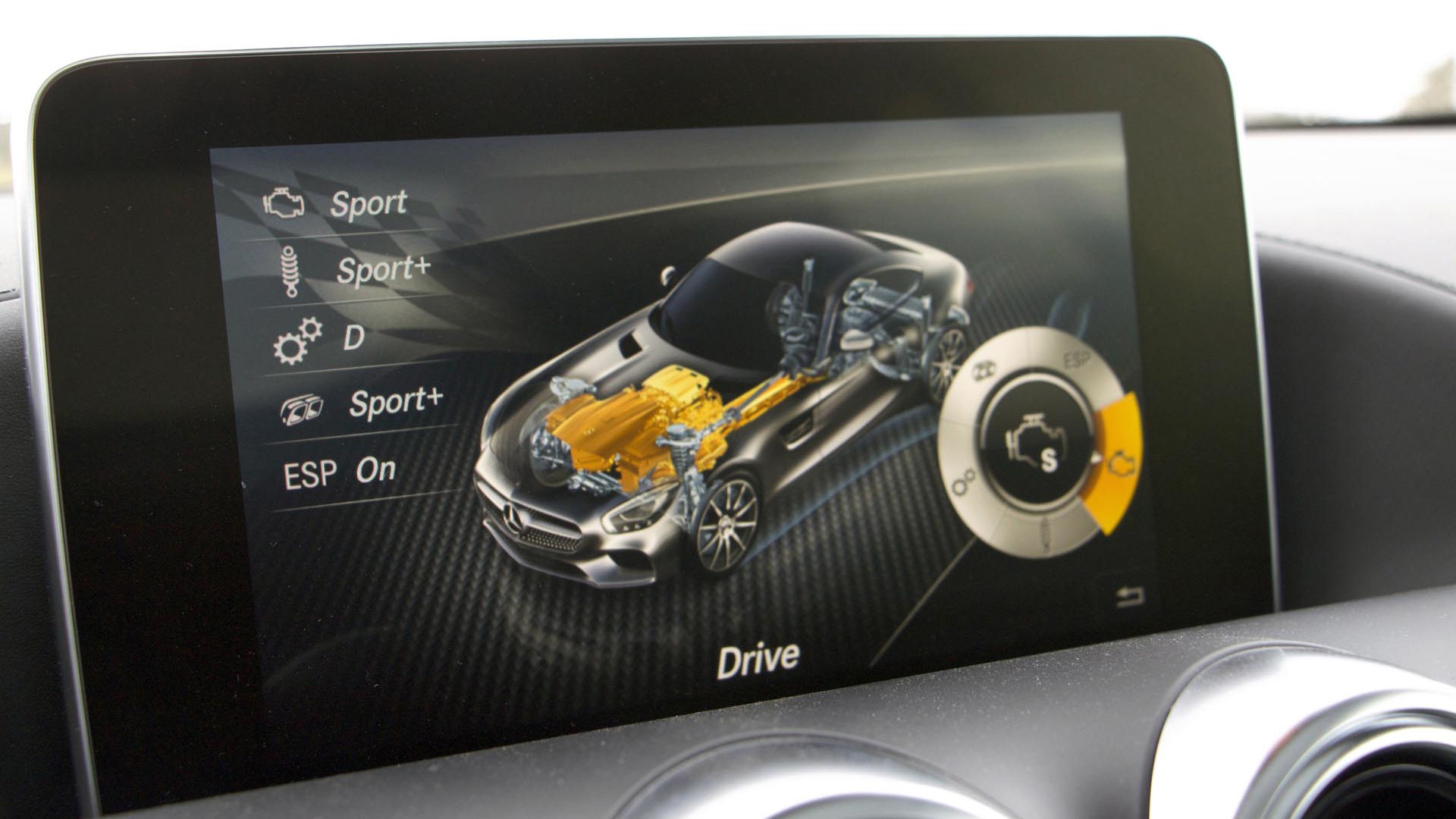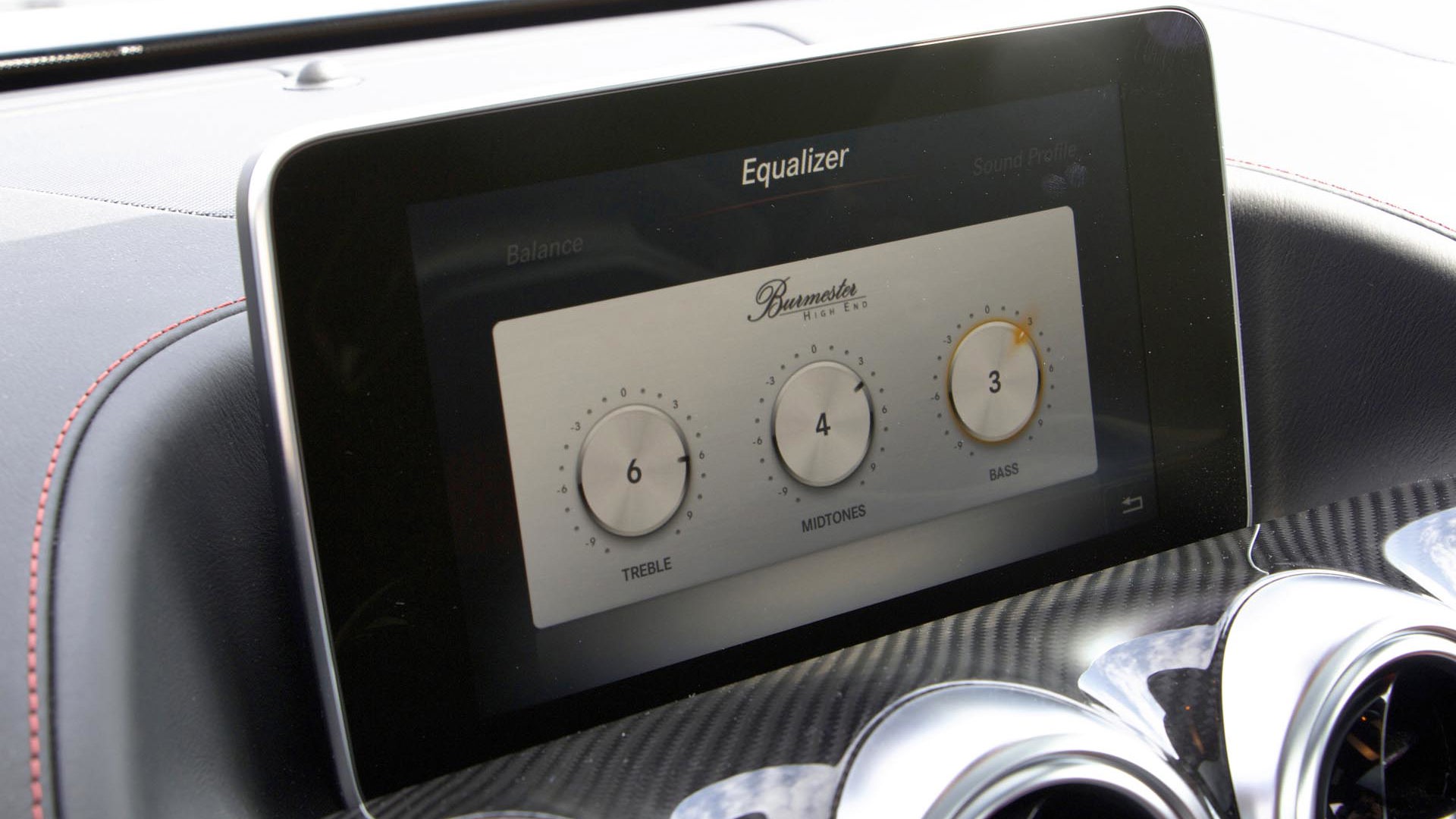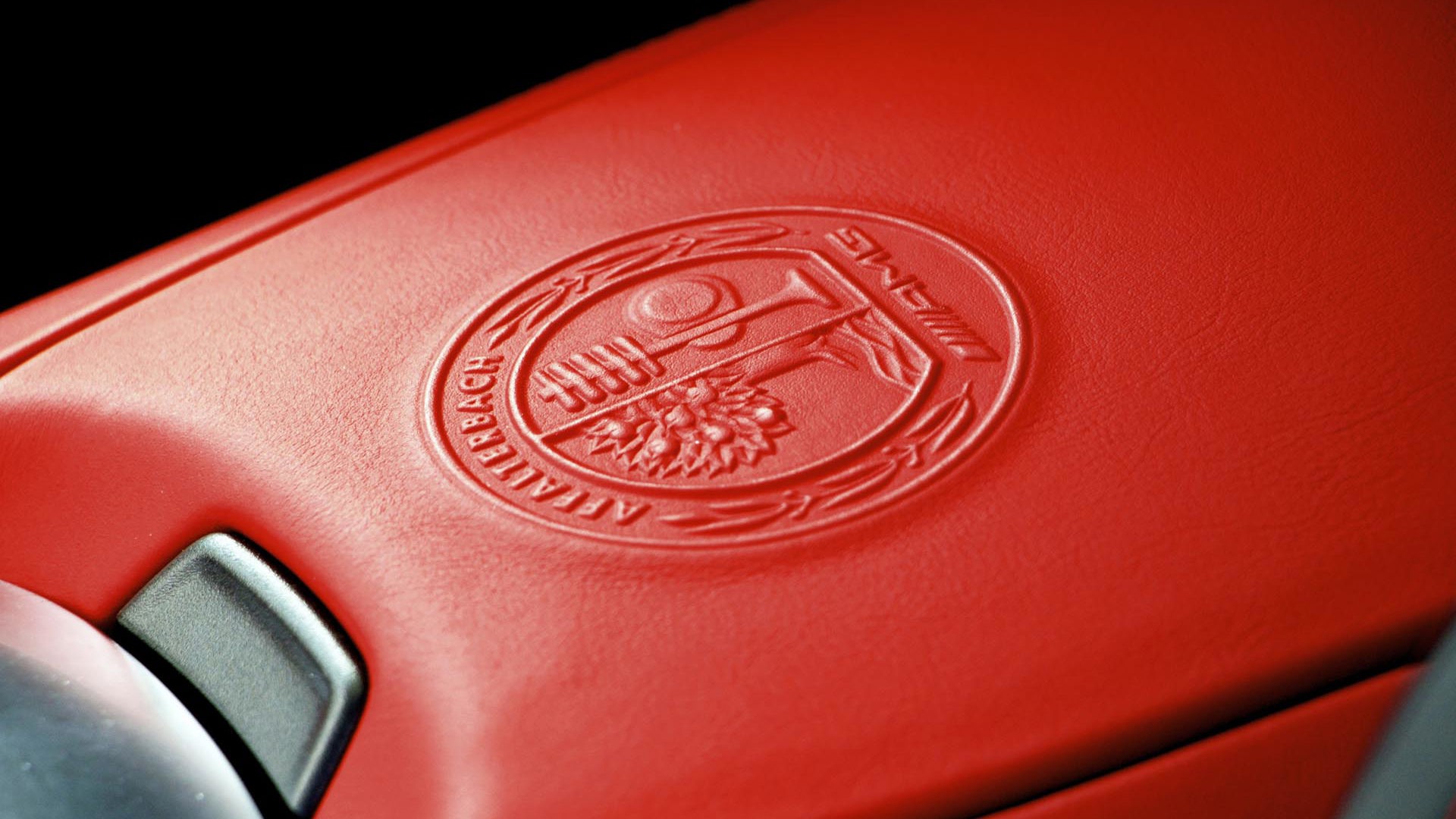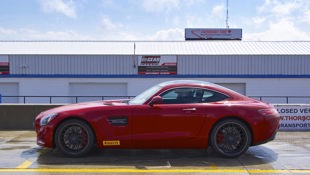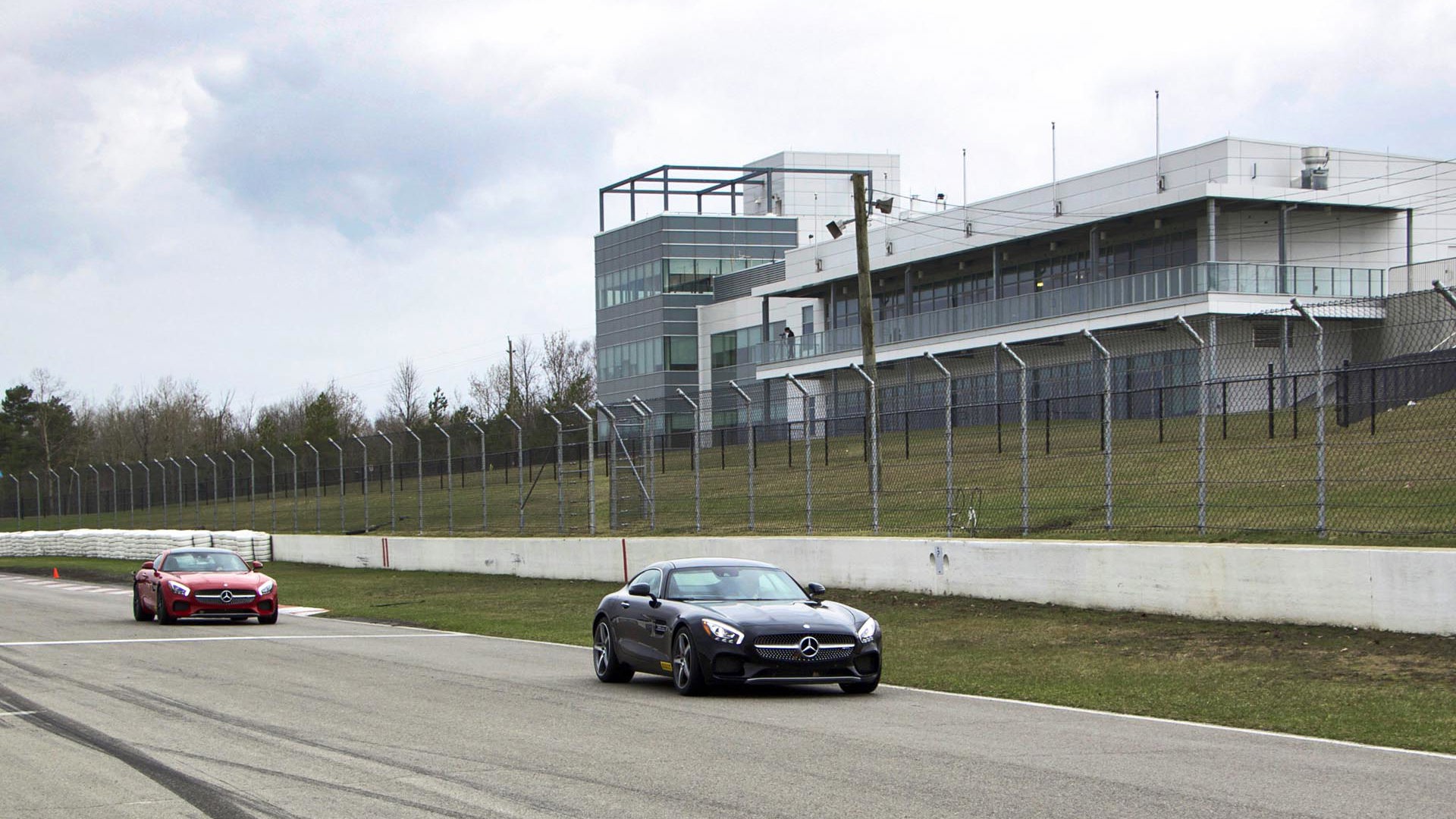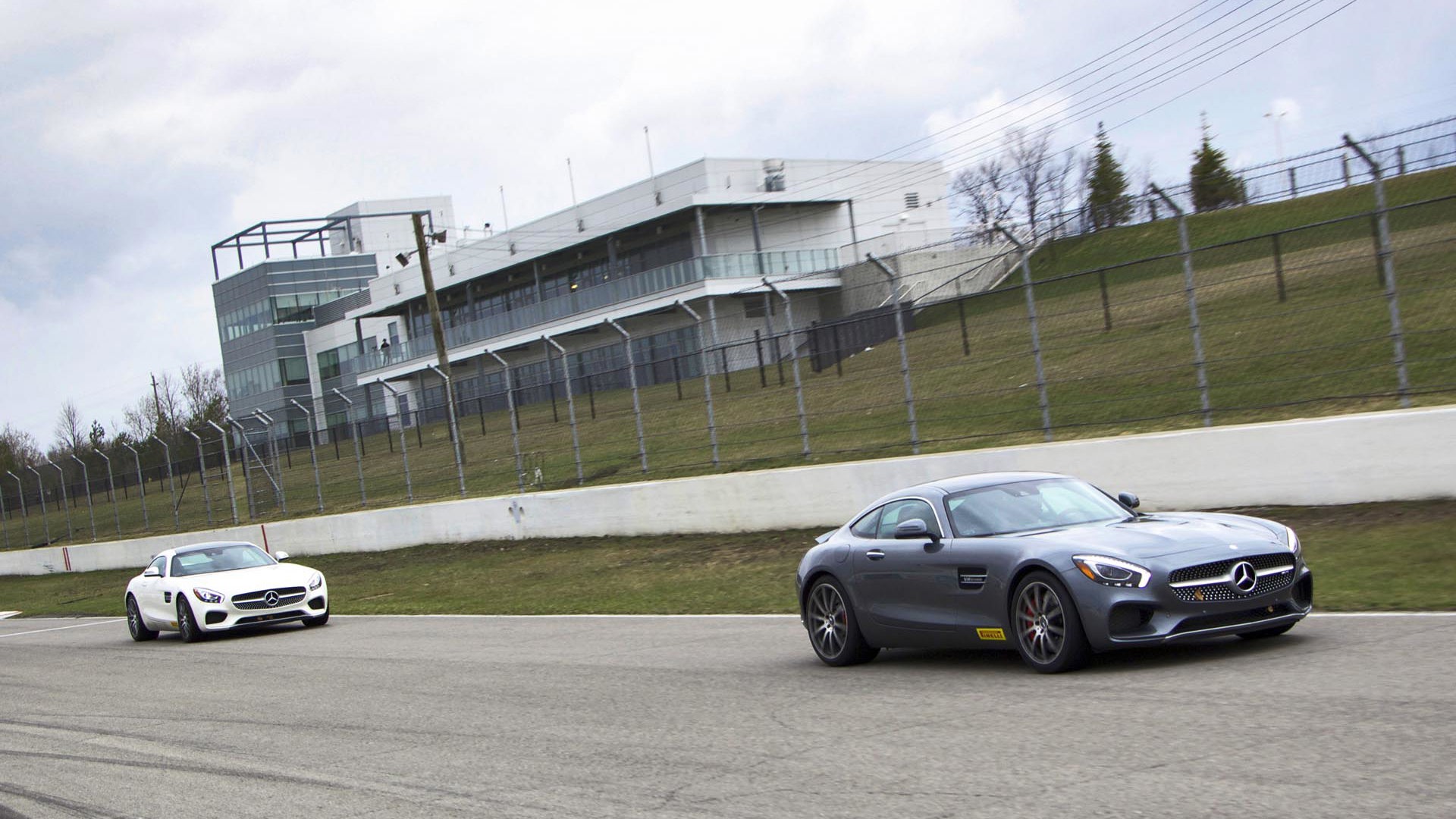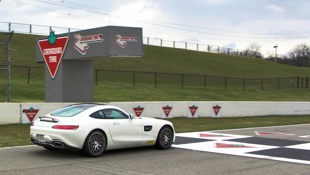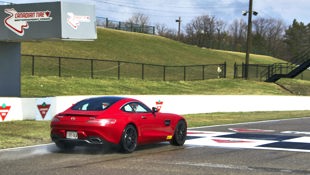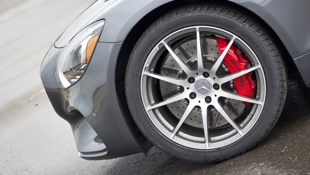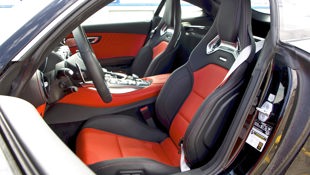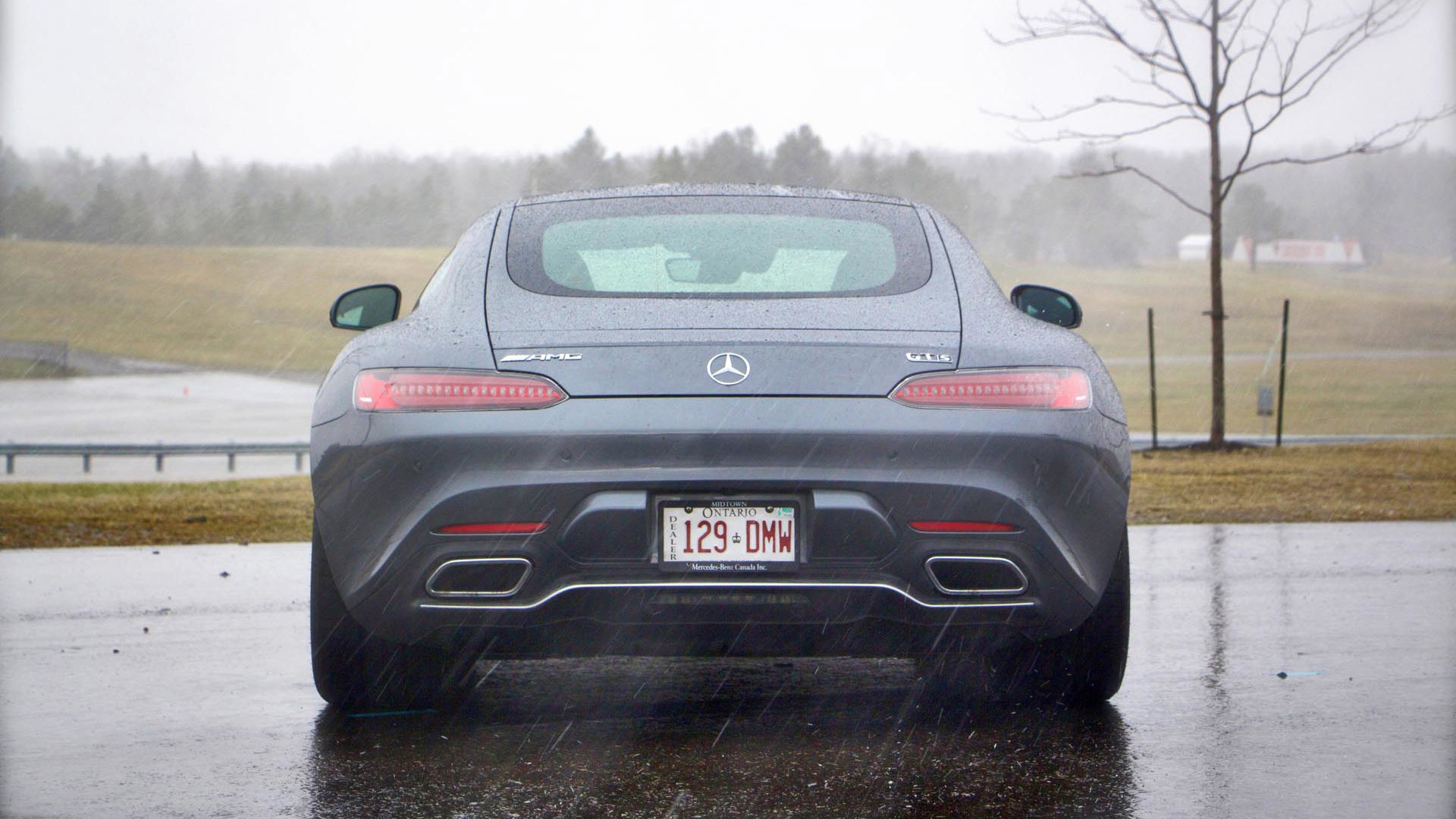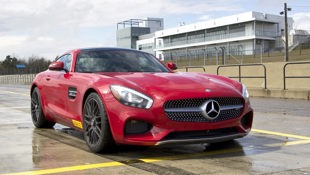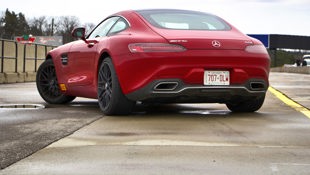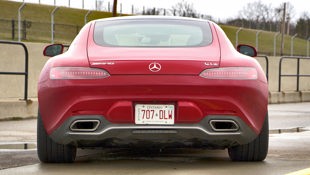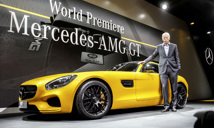
Worth it. #YOLO
Hail.
Not as in, “All hail the new king of performance.” As in, actual, real, cold, frozen chunks of ice falling from the heavens and pelting me in the face as I tried to get one last shot of #datass. Because that is one shapely derriere, and, well, I just couldn’t stop taking pictures of it. Even in the cold, frozen chunks of ice falling from the heavens and pelting me in the face.
If this was an event to highlight the latest version of Mercedes-Benz 4Matic all-wheel drive system, it would be understandable, and fitting, and welcome. But this was our first taste of the 2016 Mercedes-AMG GT, Mercedes’ luscious new sports car that has its sights set firmly on sports car glory and the Porsche 911. Okay, you can also include sports cars like the Audi R8 and Jaguar F-Type that offer a focused sports car experience and pretensions to high-performance track dominance, with Audi particularly following through with an interesting factory support program for the R8 in IMSA’s GT Class, mixing it up on tracks with hordes of 911s and Corvettes and BMWs.
The full-on racecar AMG GT3 debuted at the Geneva Auto Show and is set to go racing next year, looking to follow the success of the SLS AMG GT3 that collected wins at endurance races around the world. But enough about the GT’s mutant speed freak brother, the roadgoing GT is unencumbered by any of those frightful aerodynamics, and the result is both stunning and disturbing.
Mercedes-Benz Canada invited us to Mosport, to experience GT S road car on a world-class track in the hopes of discovering its full potential.
But first, some gushing: I am in love with the details and the close views, Mercedes seems to have an infinite variety of gorgeous wheel options and despite the lack of gullwing doors, this car has Presence. But from some angles there’s just a little bit too much hood, and the cabin is just a little too much of a bubble for my tastes. However, from any of the rear angles, this car is spectacular, low and wide and just right, also hinting at the low centre of gravity AMG worked so hard to achieve.
The first point of business in a low centre of gravity was giving up the SLS AMG’s gullwing doors. As fabulous as they looked, they require significant structural reinforcement in the roof, and that added weight at the car’s highest point, a lose-lose scenario. Another way AMG brought the weight lower was the architecture of the powertrain, with the two turbos nestled in the V of the two cylinder banks, allowing a lower mounting point, and a rear transaxle layout for the transmission. Aside from a low centre of gravity, this layout helped balance the weight longitudinally the engine mounted back far enough behind the front axle for Mercedes to claim a front-mid-engine configuration, resulting in 47:53 front/rear weight distribution. The excellent balance was evident form the first turns, as was a very planted feel, with plenty of downforce available to pin the rears down with a spoiler that elevates at speeds over 120 km/h and during aggressive braking maneuvers.
Overall, the aluminum space frame weighs just 231 kg, with other weight saving achieved through magnesium components, aluminum body panels (with an optional carbon-fibre roof available), an innovative lithium ion battery (saving 10 kg) and carbon-fibre drive shaft that reduces weight and improves performance, resulting in an all-in curb weight of 1645 kg in this spec. An equivalently priced Porsche 911 (GTS PDK) weighs in at 1,445, but gives up over 70 hp and 150 lb-ft of torque....
Ahhh, the power! With any performance car, horsepower is what makes headlines, and the Mercedes-AMG GT S creeps over that 500-hp benchmark with a twin-turbo 4.0L V8, officially rated at 503 horsepower and 479 lb-ft of torque. Peak horsepower comes on from 6,000 to 6,500 rpm, redlining at 7,000, but max torque comes on at 1,750 rpm and sticks around until 5,000 rpm, the epic thrust launching the GT S out of pit lane and onto Mosport's legendary curves. There is torque everywhere, so you have to be delicate and controlled on the throttle coming out of corners, and power builds monumentally as you tear up the back straight.
Although bi-turbo V8s aren’t new to AMG, this 4.0L unit is based on the 2.0L four-cylinder turbos in the CLA/GLA 45 AMG cars rather than the larger V8s that have seen service in various AMGs of the past decade. One of the key goals of the GT design was to lower the centre of gravity and balance the weight as effectively as possible, so AMG engineers plunked the twin intercooled turbos down in the gap of the V and went with dry sump lubrication for more compact packaging and better performance during high lateral loads. Power is delivered to the rear-mounted transmission by a carbon-fibre driveshaft that weighs just 3.9 kg.
As mentioned, the transmission is mounted on the rear axles to better distribute weight, and it is a seven-speed Speedshift dual clutch auto (DCT) that deivers sharp, quick gear changes and great anticipation when braking hard for tight corners, or you can take control using the paddle shifters. Complementing the transmission is AMG's Dynamic Select, which offers four preset modes (Controlled Efficiency, Sport, Sport+ and Race) and one customizable Individual mode that can mix and match the aggression of settings for the transmissions, throttle, suspension.
With Dynamic mode in Sport+, every setting in ‘kill’, and an open stretch of road, the AMG GT S will rifle off sprints to 100 km/h in 3.8 seconds, and sounds like unholy hell unleashed all the way. To put that in context: Jaguar’s F-Type R takes 4.2 seconds, though it delivers another entire realm of lustworthy sound effects from its 550-hp supercharged V8. Audi’s machine from the future, the R8, is well down on power (430 hp), but Quattro AWD helps it off the line and it manages the feat in 4.3 second in V8 S tronic trim. The AMG GT S is faster than any naturally aspirated rear-drive Porsche 911 except the GT3, but any of the Turbo models have the GT beat (though at considerably higher cost – they only start in the $170K range). The base GT sounds like it might be quite the bargain, giving up only 0.2 seconds in the sprint to 100, officially estimated at 4.0 seconds.
A more irrelevant speed is the 310 km/h top speed, faster than anyone is likely to reach on this continent. It is, in fact limited by Mercedes-AMG’s greater commitment to downforce, which helps it stay planted and shiny side up, its Cd a fairly high 0.36 because of that. A fixed spoiler is available, but the retractable spoiler seen in the photos above deploys at 120 km/h and retracts when going back below 80. Alternatively, it can be raised at any time by spoiler lovers.
AMG wasn’t going to shortchange the GT S on brakes when giving it so much power, so the front disc rotors are 390 mm in diameter, perforated and slotted, internally ventilated, with red brake calipers housing six-piston fixed calipers. The rears are a smaller 360 mm with four-piston floating calipers, but the same vented and perforated design. Though we did not test them at this event, high-performance composite ceramic brakes are available, bumping the diameter of front rotors up to 402 and the same 360 at the rear. The base GT coming next year features 360-mm brake discs all-round, giving up the larger front rotors.
So how did all of these components come together on the track? Magnificently. First and foremost, the sport seats envelop you and getting in is nowhere near as tricky or awkward as the gull-winged SLS. The seats are well bolstered without being too narrow, and power adjustable for a good fit. The steering wheel is also power adjustable, but far more endearing is the deeply sculpted shape, flat bottom with comfortable grips (wrapped in ‘Dinamica’ synthetic suede or perforated leather), a small diameter, sporty feel and convenient multimedia controls. The aviation-inspired centre console contains
The rest of the interior is sublime, with a variety of interior treatments on display a vivid orange and black, white and black and grey on black with the centre console of the last trimmed with some novel matte finish carbon fibre. Of course, the variations are endless and bespoke options can be ordered, but you’re not here to read about the interior trim, are you?
Once adjusted and strapped down, the bi-turbo V8 fires up with a bark and the settle in to a mellow burble like a napping Cerberus, providing appropriate rumbling mellowness for a road car, but the promise of greater drama at the press of the ‘exhaust’ button, or cranking the car into Sport or Sport+ mode, which dials the electronically controlled baffles in the exhaust into ‘I want more attention’ mode. Of course, being on a race track and starting from pit lane, we crawl away every time and never put the standing start traction to the test, maintaining the tread on those rear tires.
Speaking of tires, Mercedes offers a variety of wheel designs for the GT S, but all of them measure 19 x 9 inches in front and 20 x 11 in back wrapped in rubber. The standard fitment is Pirelli P Zero (265/35 front and 295/30 rear), but the Track Package upgrades these to an ultra high performance tire, in our case Dunlop Sport Maxx Race. Both of these tires are ZR and 98Y rated and delivered stupendous grip in braking and cornering forces, though the day got progressively colder and wetter, so we never truly pushed the car to the full speeds and deceleration and cornering grip it is capable of on track. In the wet weather, we did push the tires beyond their limits a couple times, powering out of corners a bit sideways, but the GT has that deft feel and balance that a calm counter steer brought it back into shape without ESP intervention, which, in the medium Sport mode offers a bit more leeway before stepping in. Race mode turns it off entirely, or you can manually turn it off if you so choose.
Serving the car both on track and in everyday drivability (though I wouldn’t call it a year-round performance car with that extreme power and rear-drive combination), Mercedes spared no expense utilizing aluminum double wishbone suspension modeled after motorsport applications honed in the SLS AMG’s endurance racing campaigns. While we never could push the car to my limits (I’d unlikely ever reach the car’s limits), the capability and precision of the firm but controlled damping of the suspension was evident.
Adding further flexibility, AMG Ride Control with adaptive dampers is standard on the GT S, meaning the driver can select Comfort, Sport or Sport+ damping rates for a progressively firmer ride, with correspondingly firm and accurate steering, increasing the feeling of confidence on this notoriously tricky track. No matter which damping mode I was in, I found my helmet bouncing off the roof on some of the choppier pavement sections – indicative of both the limited headroom and firm ride. Another performance component that aids the GT S on track is the locking rear differential that helps balance power output on corner exits.
When my head wasn’t bouncing off the roofliner, it was covered in a mixture of intense concentration and gleeful abandon. The GT S is a lovely driver’s car that responds to inputs with potent immediacy, both from the throttle, brakes and steering, and further sensory rewards from the auditory and physical feedback that make the driving experience rewarding and intimate.
While being a pleasure to pilot, it’s also competent in the right hands. Mercedes-AMG boss Tobias Moers pegged the GT’s Nurburgring time at 7 minutes 30 seconds with “standard tires, not special compounds designed to last just a few laps,” in an interview with AutoCar, and also revealed that a more track-focused version should bring that down by another 10 seconds. The similarly priced Porsche 911 GT3 manages a slightly better 7:25, but that machine is far more track focused and a bit less ‘civilized’. The GT S is by no means a record breaker, but it is fast, so don’t let the sexy looks, sumptuous interior and big overpowering bi-turbo V8 lighting up the rear wheels fool you into thinking it is a boulevard cruiser like the SL 550. Then again, it falls a little bit short of the 911 in its ability to inspire confidence on the track, and the 911’s wide variety of trims means that you can tailor the power and capability depending on budget, though the GT’s design is more dramatic and the interior a thing of beauty.
The AMG GT is both more approachable and more capable than the SLS that it replaces with a price setting it amidst popular prestigious sports car competitors. While it may not instantly upset the order in the sports car hierarchy, it is a stunning piece of machinery that will be great vehicle for Mercedes and AMG loyalists to take to the track, drive around town and still impress at the valet.
The high-spec GT S trim starts at $149,900 and is the only model being shipped to customers at the moment. However, this is just a starting point, and despite the luxury and performance that is part and parcel of such a status symbol, you can add a Track Package for $3,300, which adds active engine mounts, performance steering wheel and ultra-high-performance tires, and if you’re truly serious about track days, carbon-ceramic brakes are another $13,750.
With a variety of paint, upholstery and trim options, the GT can be customized to your tastes, with a price to match. Mercedes Canada has also ordered 30 Edition 1 units, adding carbon fibre roof, gloss black accents, black Nappa leather with Dinamica inserts, staggered 19/20-inch 10-spoke bi-colour wheels, AMG aero package, steering wheel and fixed rear spoiler for an extra $10,900.
One particular option I will call out is the optional $6,900 Burmester 3D Surround Stereo that cranks out 1,000 watts through 11 speakers and 11 channels, and 4 sound presets to deliver optimal sound. An extra flourish that comes with the Burmester upgrade is metal speaker covers with pinprick patterns that grace the tweeters in the door. Even the base stereo is supplied by Burmester and should be a feast for the ears with 640 W of power and 10 channels for 10 speakers. Confession: I was too busy pinning the throttle at every opportunity to listen to the engine roar to pay much attention to the stereo quality.
The standard GT will arrive as a 2017 model in August 2016, with 456 hp, 443 lb-ft from the same bi-turbo V8, with a significantly lower cost of entry.
| Warranty: 4 years/80,000 km; 4 years/80,000 km powertrain; 5 years/unlimited distance corrosion perforation; 4 years/unlimited distance 24-hour roadside assistance Competitors: |
Pricing: 2016 Mercedes-AMG GT S
Base Price: $149,900
Option Packages: Edition 1 Package (Limited to 30 units in Canada) $10,900 – carbon-fibre roof, Nappa leather/Dinamica upholstery, 19"/20" mixed AMG 10-spoke bi-colour wheels, AMG Aerodynamics Package (fixed rear spoiler, flics, side skirt attachments), AMG Performance steering wheel, AMG Night Package (high-gloss black exterior elements), designo seatbelts;
AMG Track Package $3,300 – active engine mounts, AMG Performance steering wheel, AMG Dynamic Plus Package (incl. performance steering/suspension), ultra high performance tires;
Exclusive Package $2,800 – extended trim elements, trunk cross bar in carbon-fibre/matte carbon-fibre/silver fibreglass;
Available Options: AMG carbon ceramic brake system $13,750, Distronic Plus $1,200, Burmester audio $6,900, carbon-fibre engine cover $1,500, AMG carbon-fibre door sills (non-illuminated) $1,300, 19"/20" mixed AMG 10-spoke forged wheels $600, 19"/20" mixed AMG cross spoke forged wheels $1,500, 19"/20" mixed AMG matte black cross spoke forged wheels $2,000, AMG exterior carbon trim $6,000, AMG Performance steering wheel $250, designo seatbelts $250
Freight & PDI: Approx. $2,000



